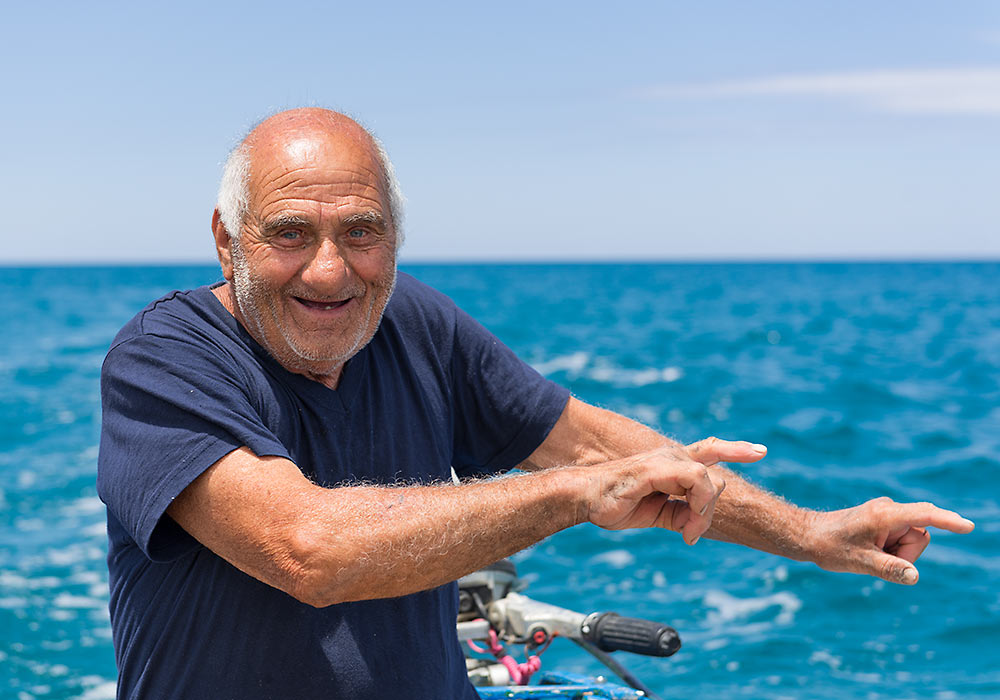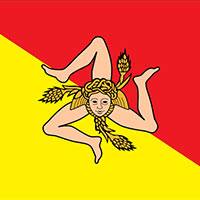Cefalù
Cefalù is one of the major tourist attractions in Sicily. It is a charming small city on the north coast of Sicily, about 70 kilometres east of Palermo. It has a medieval character, and the unfinished Norman cathedral, begun by Roger II in 1131, is impressive inside and outside. The rock called Rocca di Cefalù forms a dramatic backdrop to the cathedral and the old city; climbing the rock is very rewarding. The name Cefalù is derived from the Greek ’Kephaloidion’ comes from the head-like shape of the rock which towers above the town.
Cefalù was founded at the end of the 5th or early 4th century BC. In the beginning, it was probably just a fortress belonging to the Himeraeans. The area may have been first peopled by refugees after the destruction of Himera. Its name first appears in history at the time of the Carthaginian expedition under Himilco, 396 BC, when that general concluded a treaty with the Himeraeans and the inhabitants of Cephaloedium.
Agathocles of Syracuse conquered Cefalù in 307 BC.
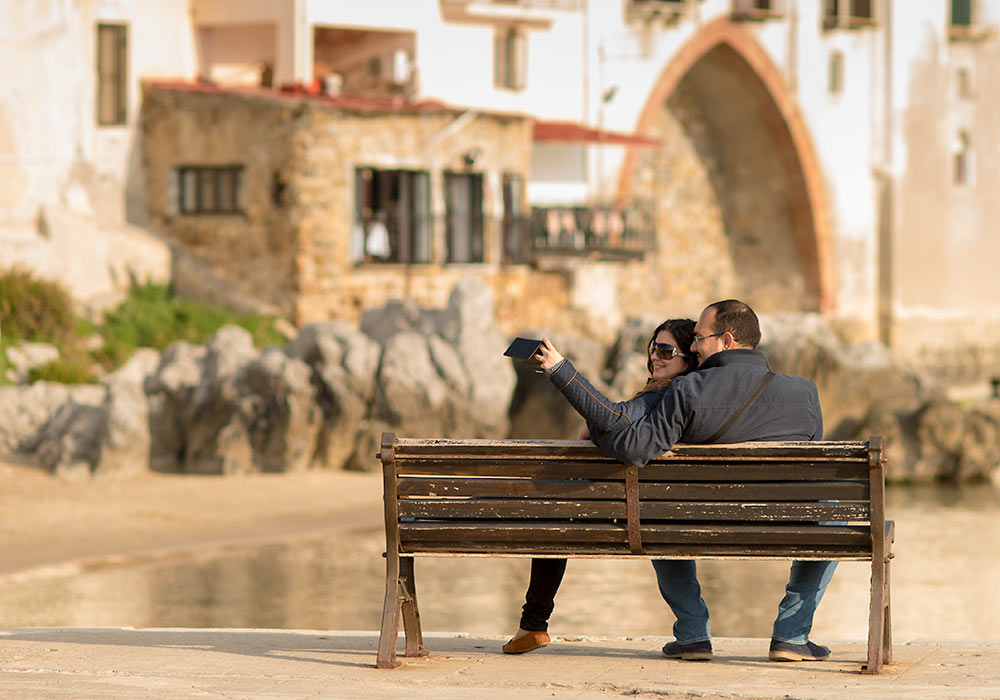
The Arabs took the town in 857.
In 1063 the Normans conquered the Arabs and later rebuilt the town.
Cefalù was for some years in the 1920s the home of the necromancer Aleister Crowley and his more or less disturbed followers. His Temple of Thelema (near the football stadium) now lies in ruins (see photos here). Crowley was eventually arrested, found guilty of immoral behaviour (sex with goats was not considered OK at the time), and expelled from Italy.
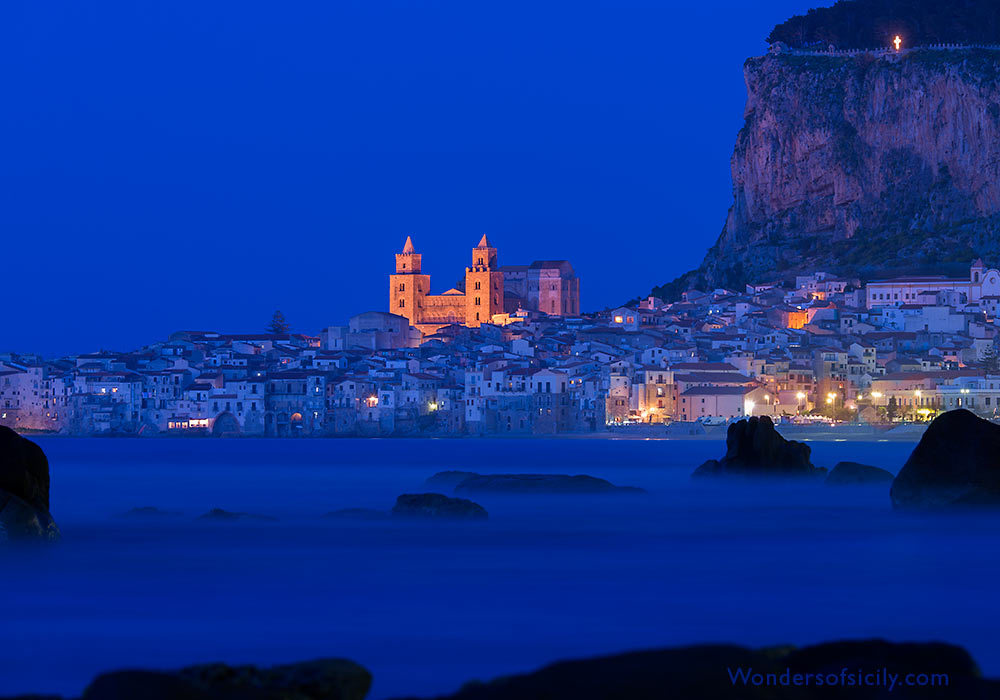
Cefalù, a charming small town situated on Sicily's north coast, is known for its picturesque beauty. The town boasts a delightful beach, which served as a captivating backdrop for beach scenes in The White Lotus season 2. With its narrow streets and medieval ambiance, the old town exudes a unique charm, complemented by a variety of restaurants that offer delicious local specialties.
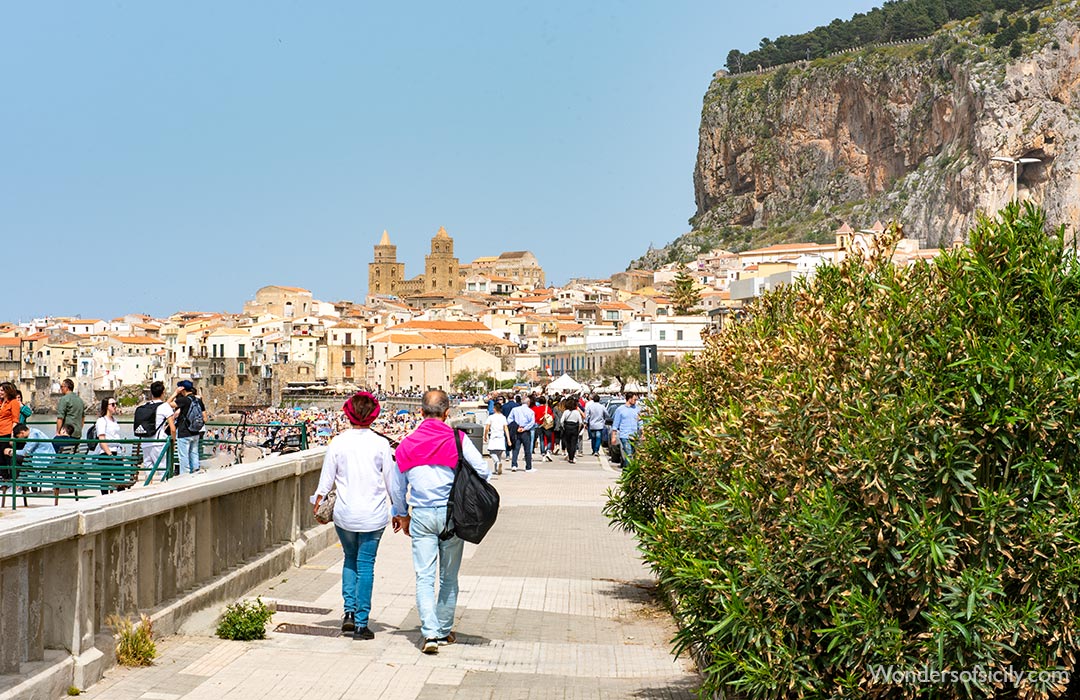
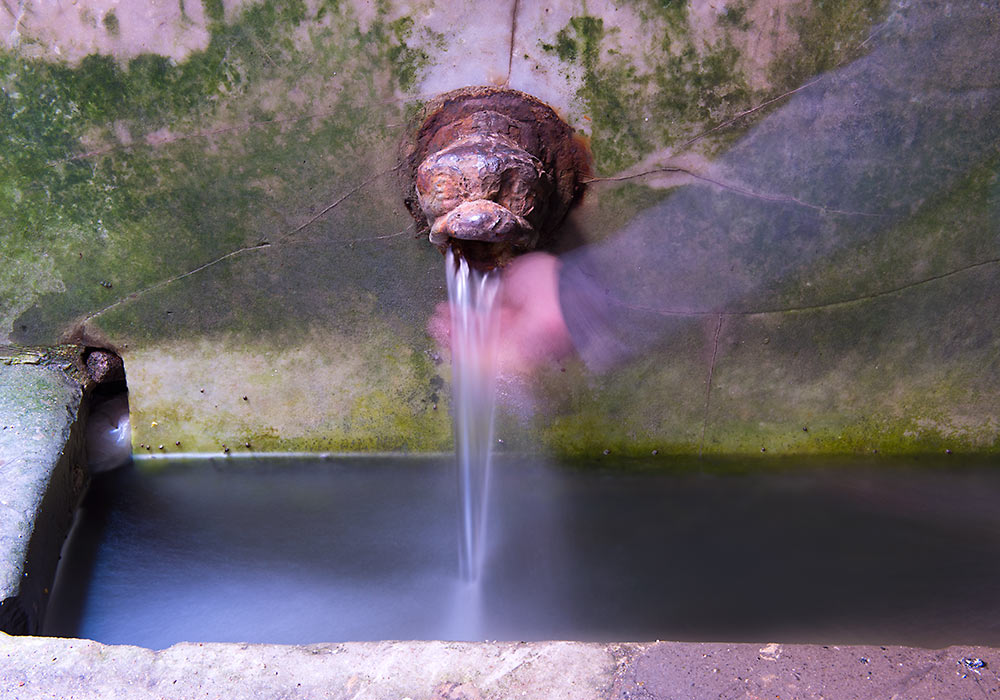
The Lavatoio is a picturesque medieval wash-house made during the Arab occupation of Sicily (827-1090).
Photo: Per-Erik Skramstad / Wonders of Sicily (ISO 100, f16, 30sec)
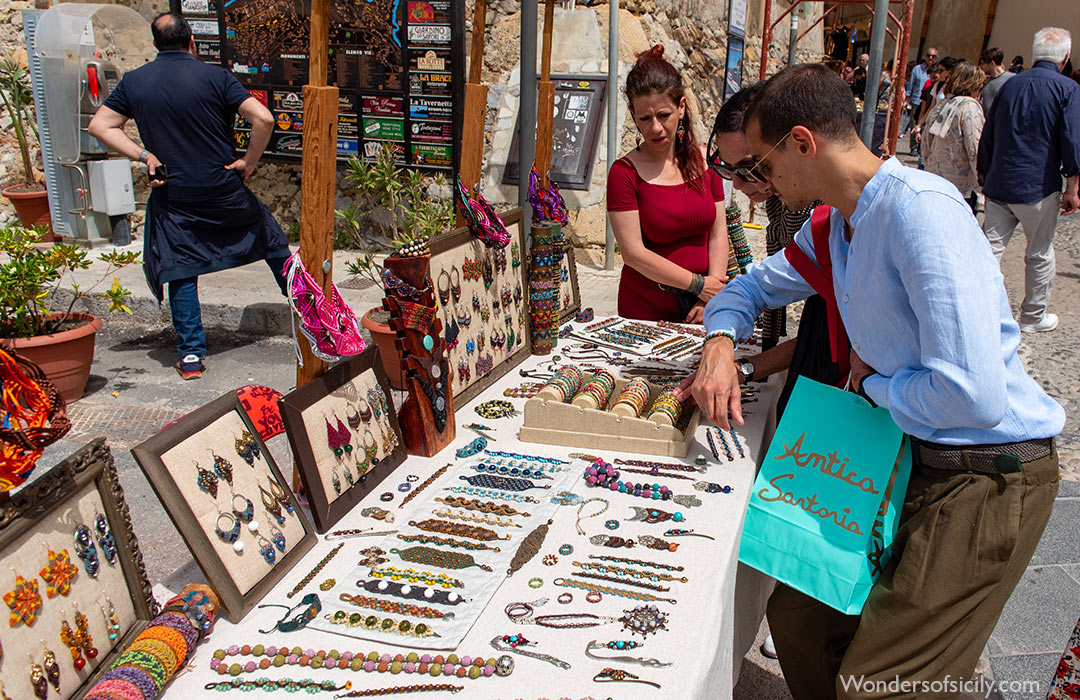
Street vendor in Cefalù specializing in beautifully handcrafted jewellery.
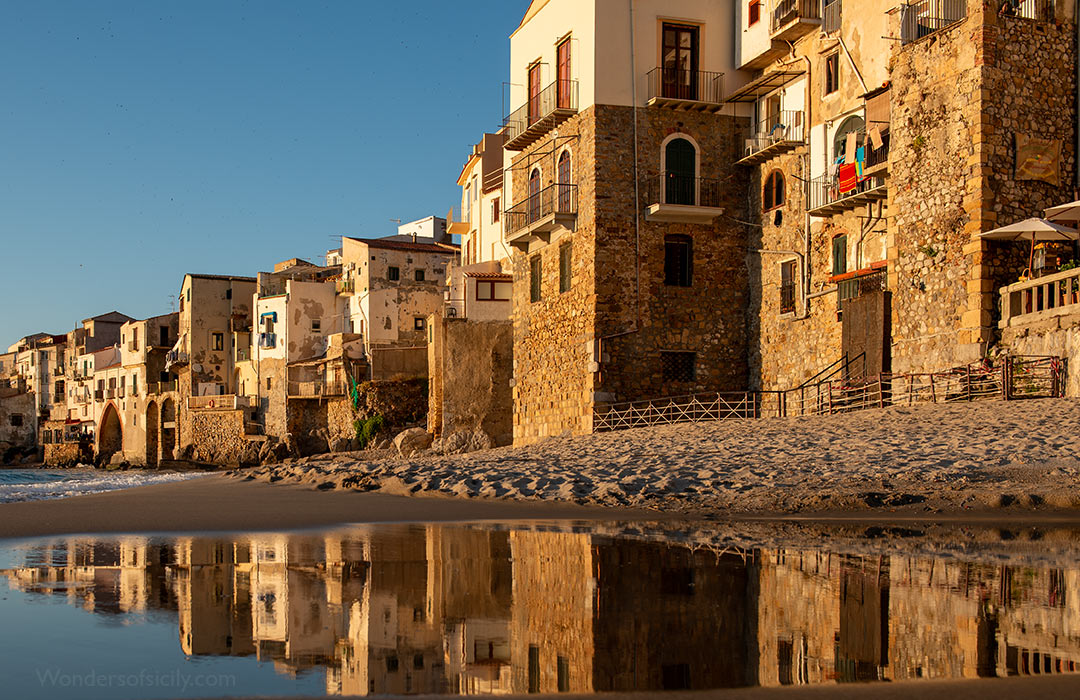
The Cefalù Cathedral
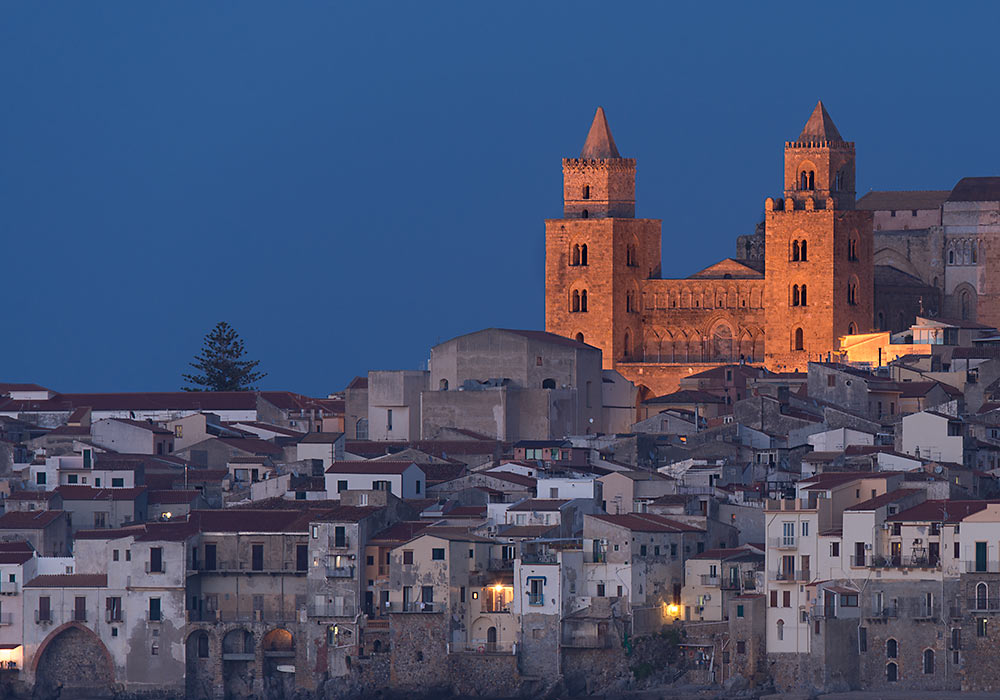
Cefalù with its magnificent cathedral one March evening. (ISO 100, f10, 6 sec)
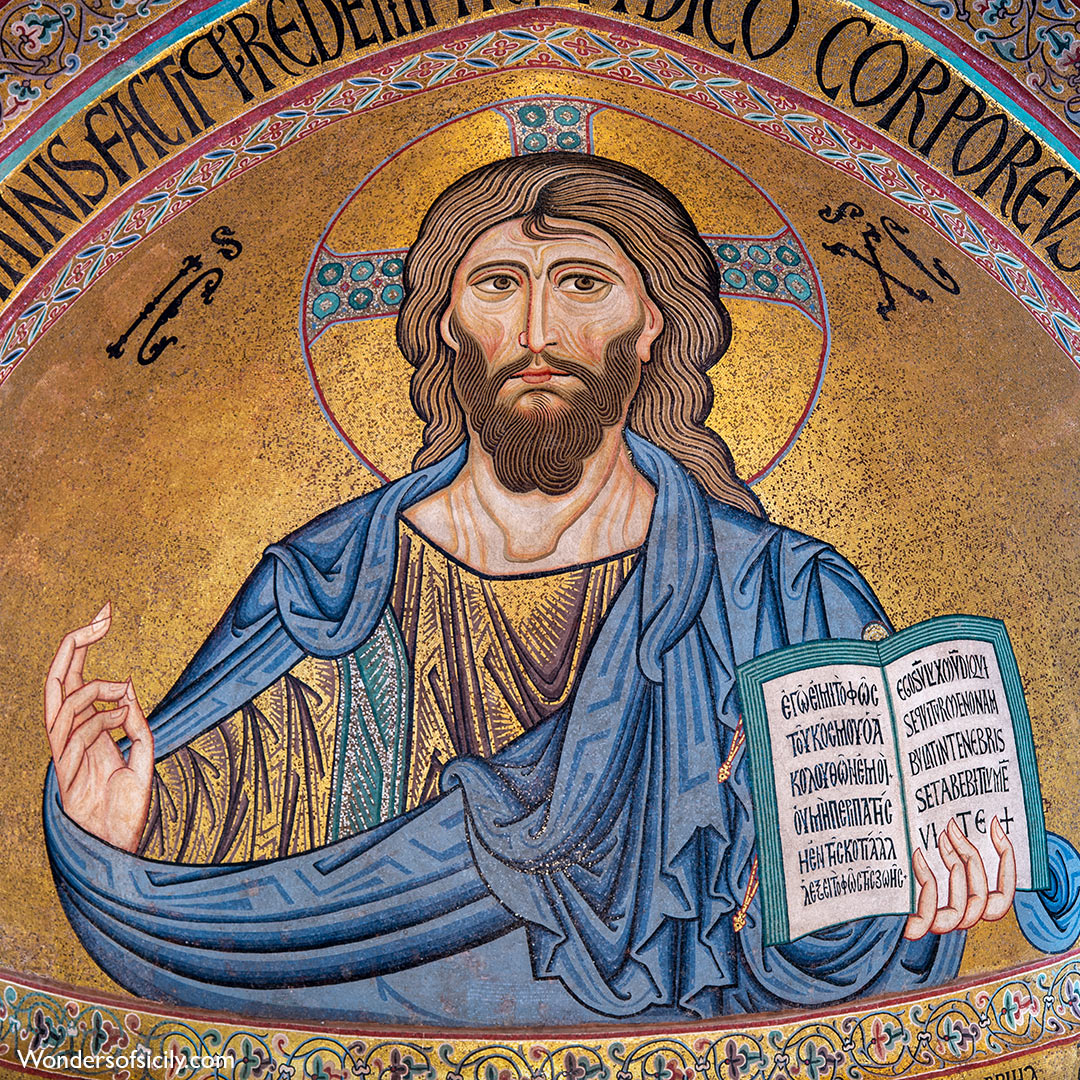
The majestic Christ Pantocrator. Christ is holding an open book with the Greek and Latin biblical text from John 8:12 (‘I am the Light of the World: he that followeth me shall not walk in darkness’).
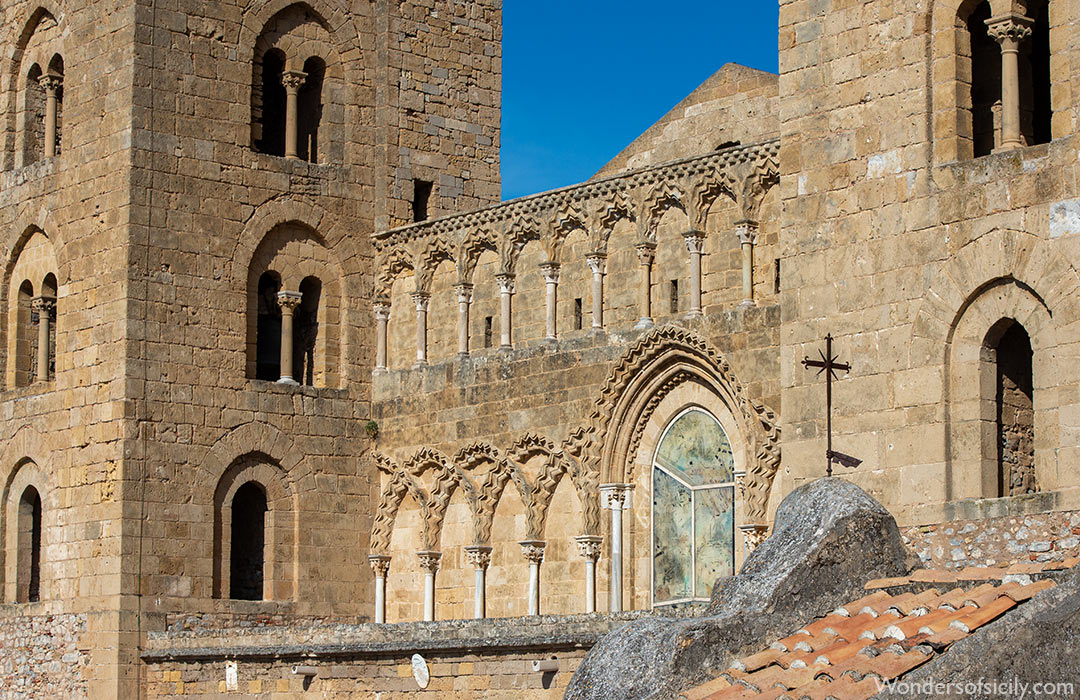
See photos of the Norman Cathedral in Cefalù here!
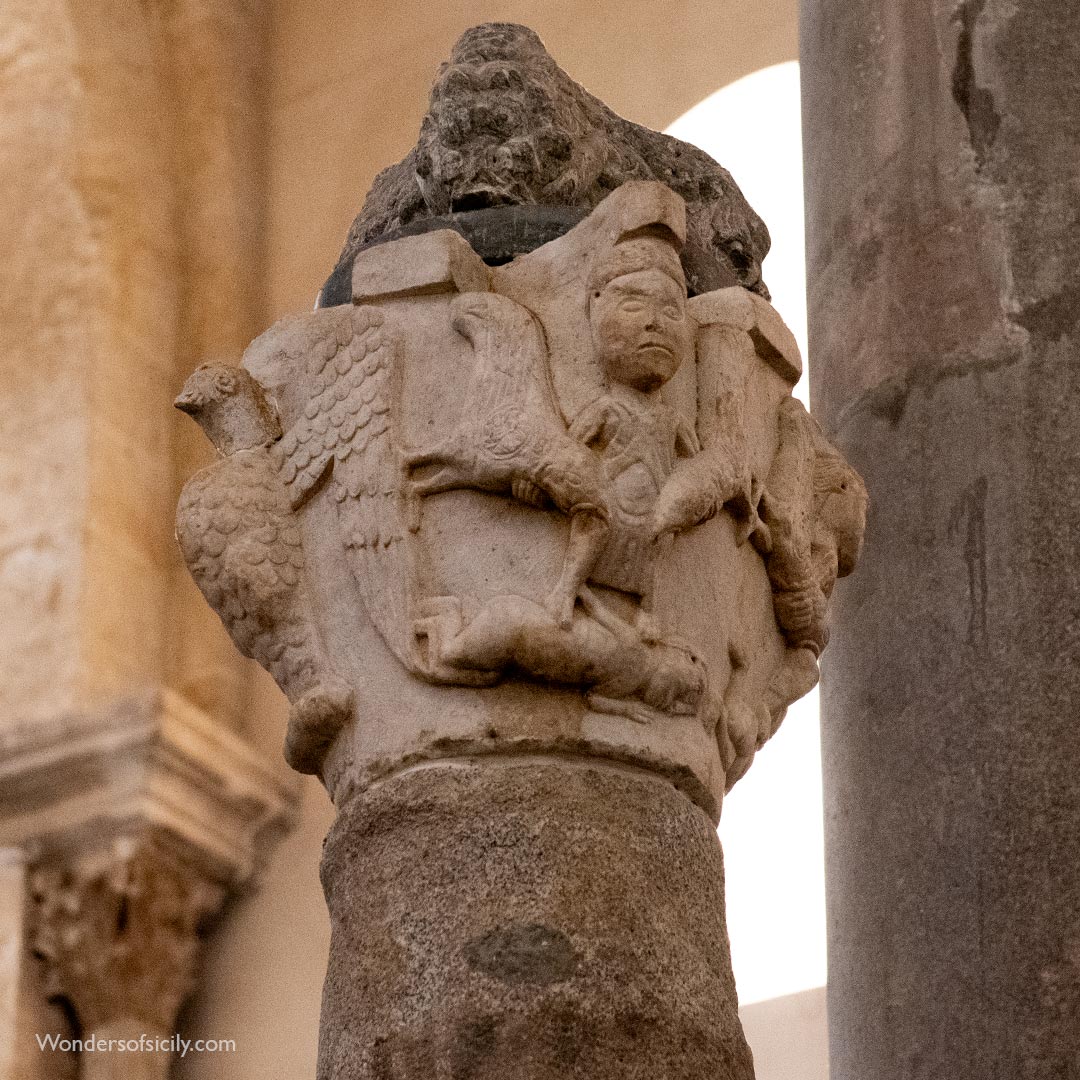
This 12th century standalone capital was once part of the cloister garden.
Piazza del Duomo
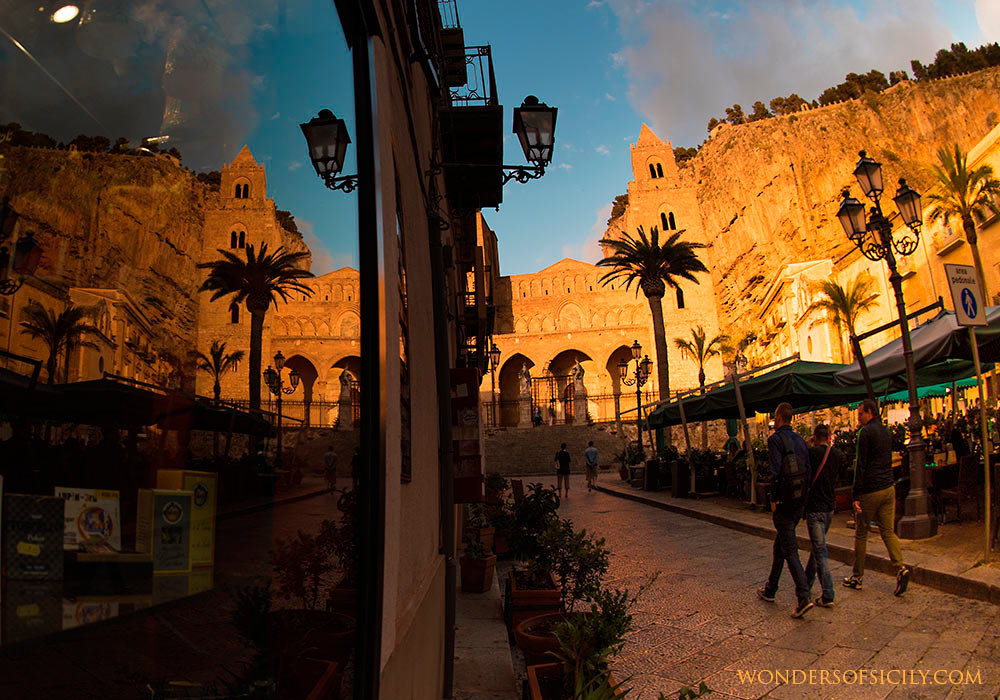
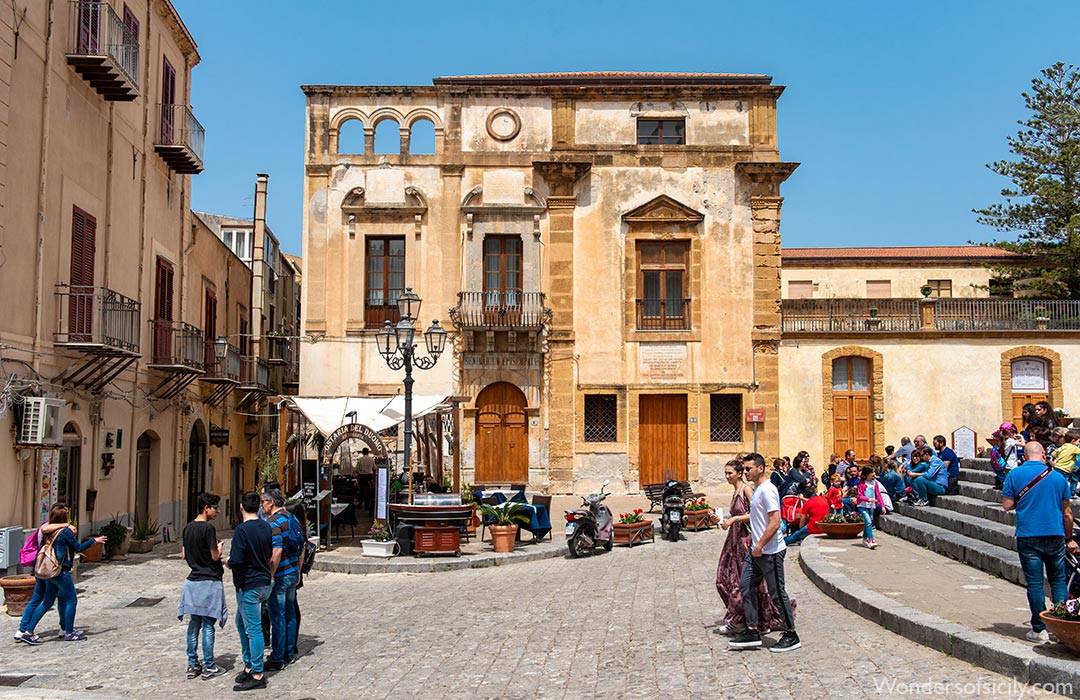
The piazza in front of the magnificent Norman cathedral.
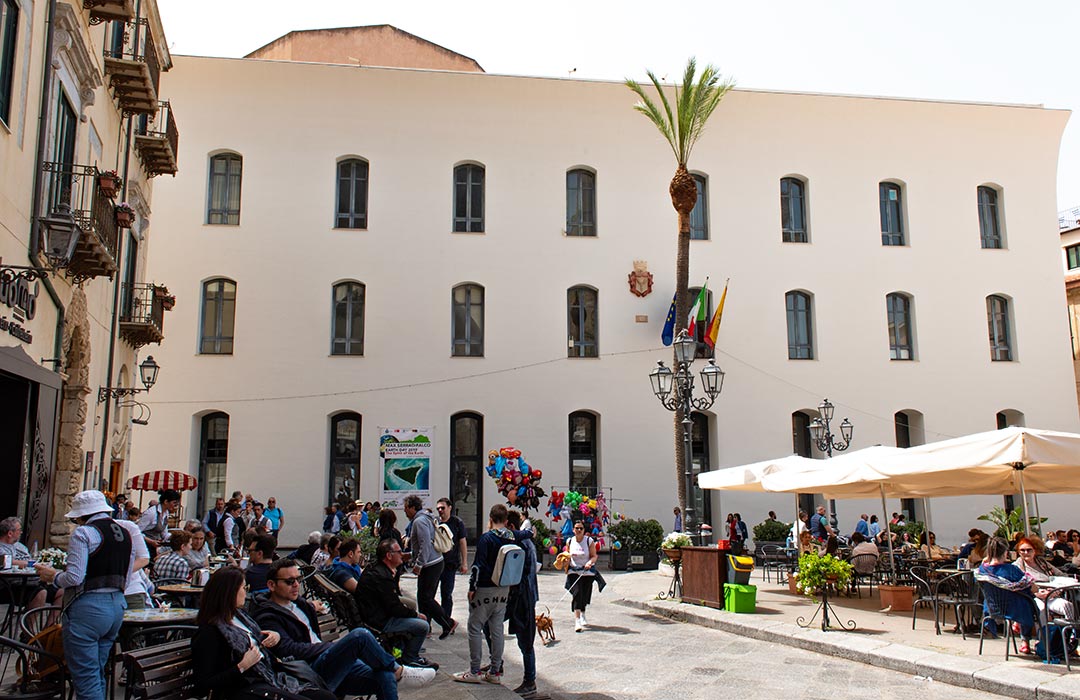
The Town Hall on the piazza in front of the cathedral.
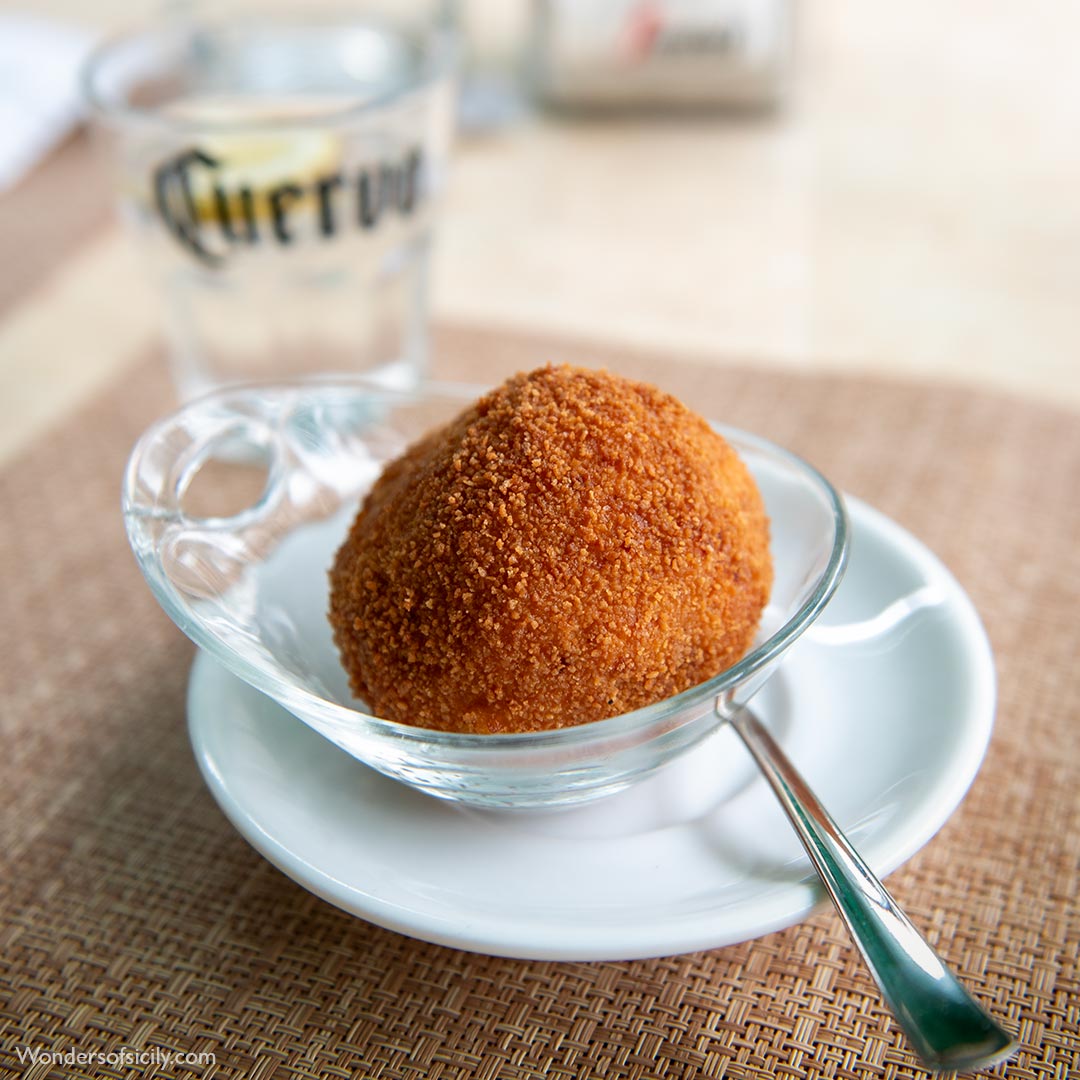
The piazza is adorned with numerous enchanting outdoor restaurants and cafés. If you're new to Sicily, indulging in arancino and cannolo is an absolute must. These delightful culinary delights will surely leave a lasting impression on your taste buds.
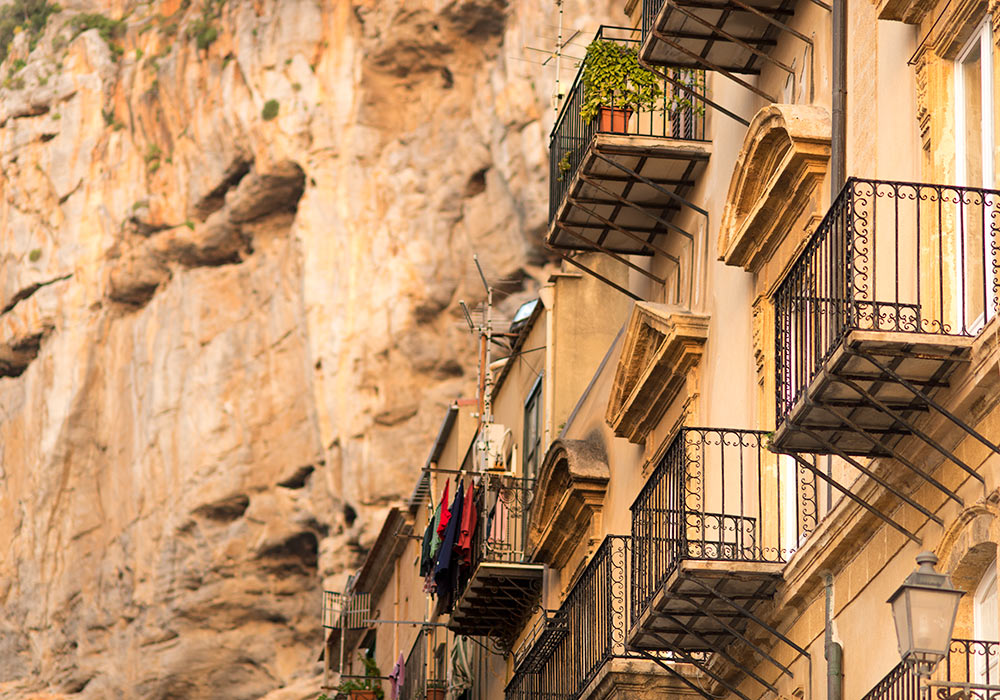
Sunset at the Piazza del Duomo, Cefalù. In the background the majestic Rocca di Cefalù rises.
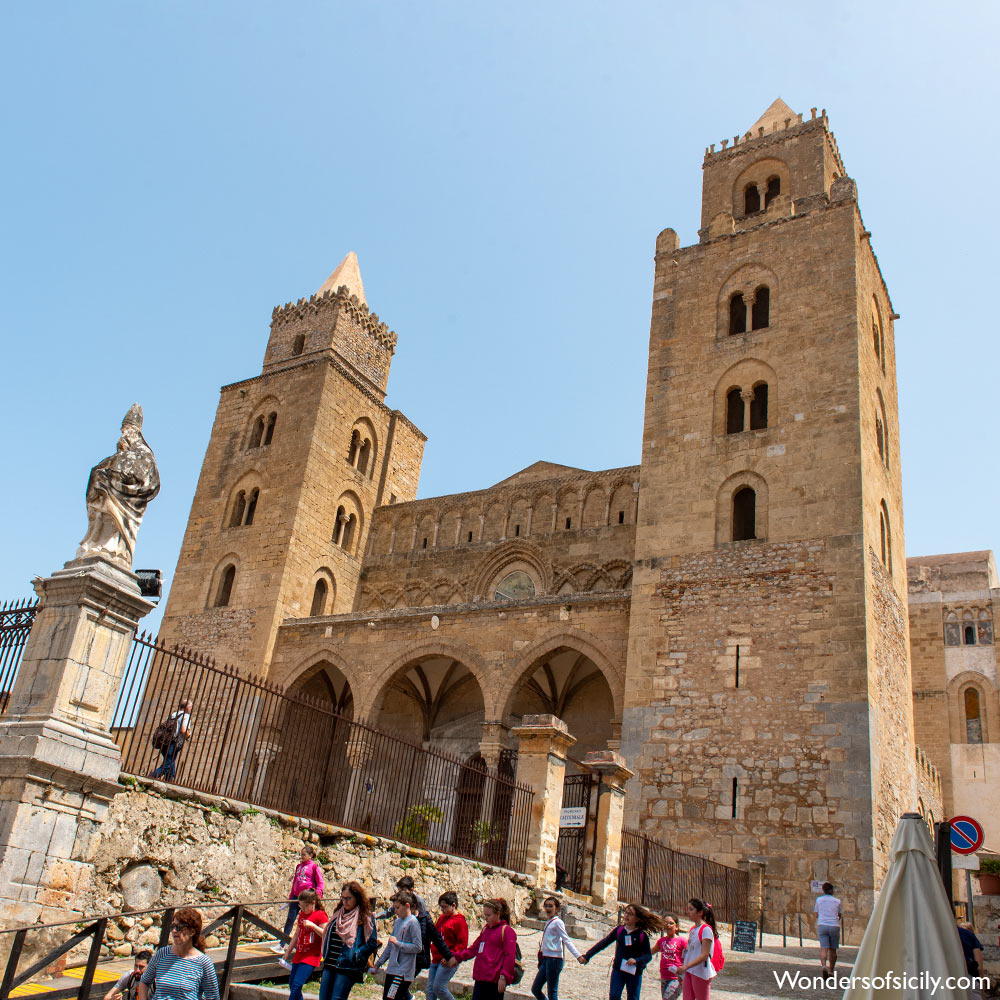
The Norman Cathedral.
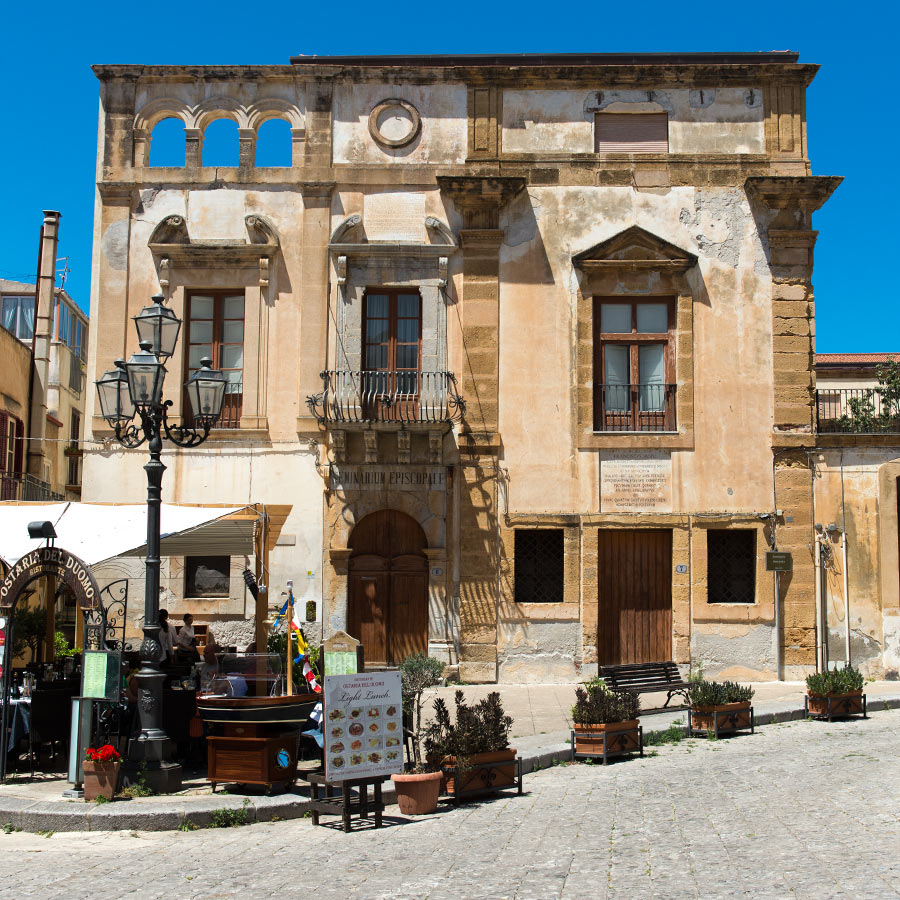
Seminarium episcopale.
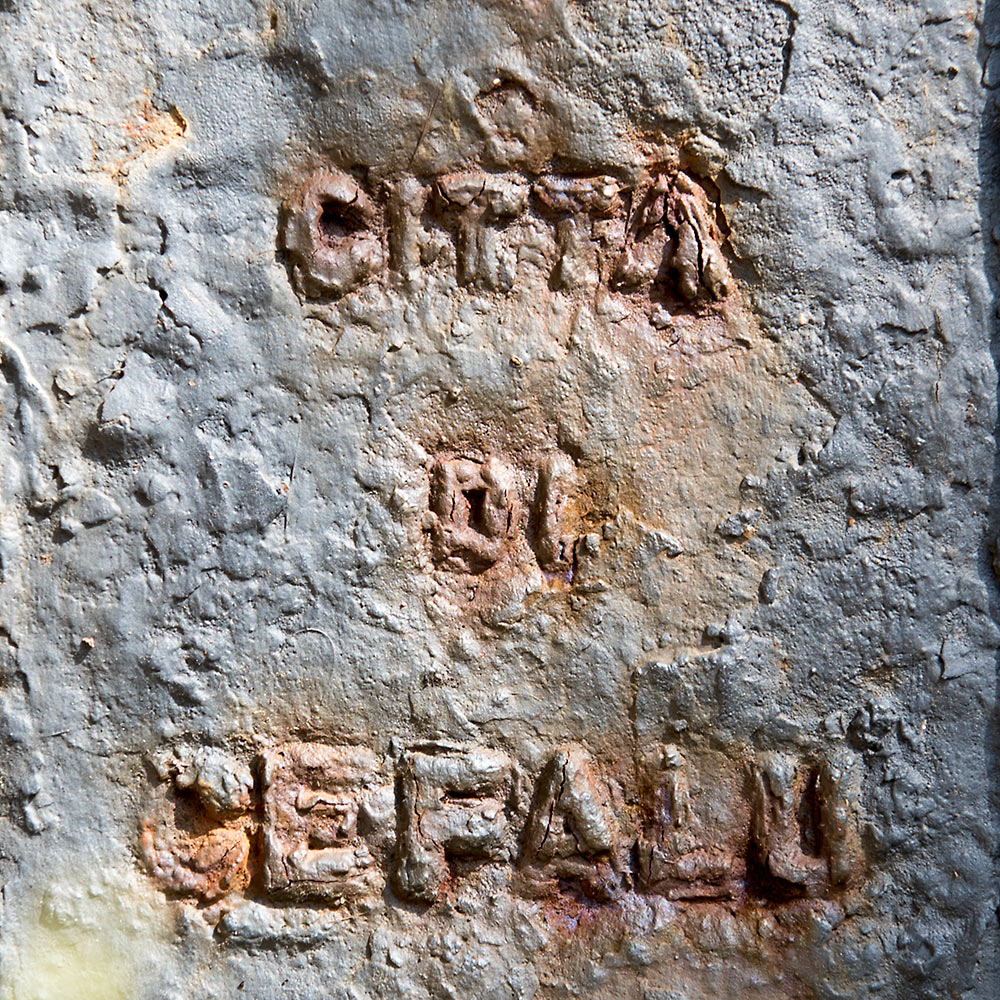
Time has left its stamp on Cefalù.
The Lavatoio
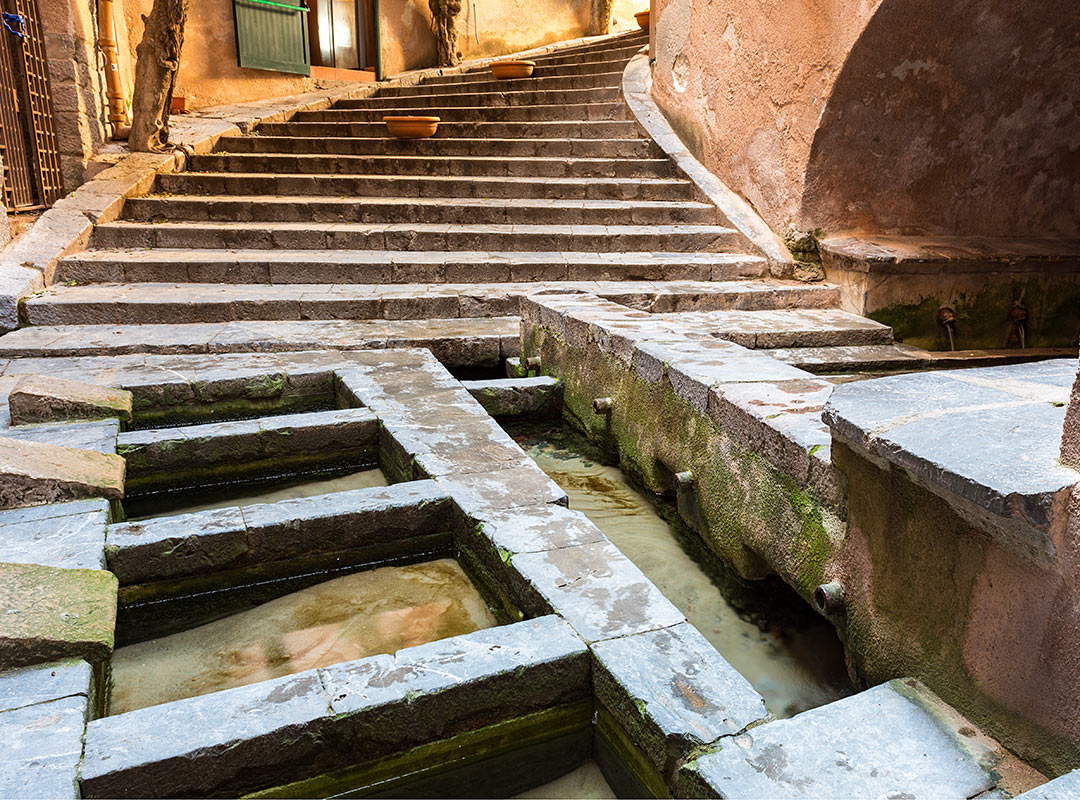
The Lavatoio is a medieval wash-house, originally a spring converted into a laundry by the Arabs.

The old port
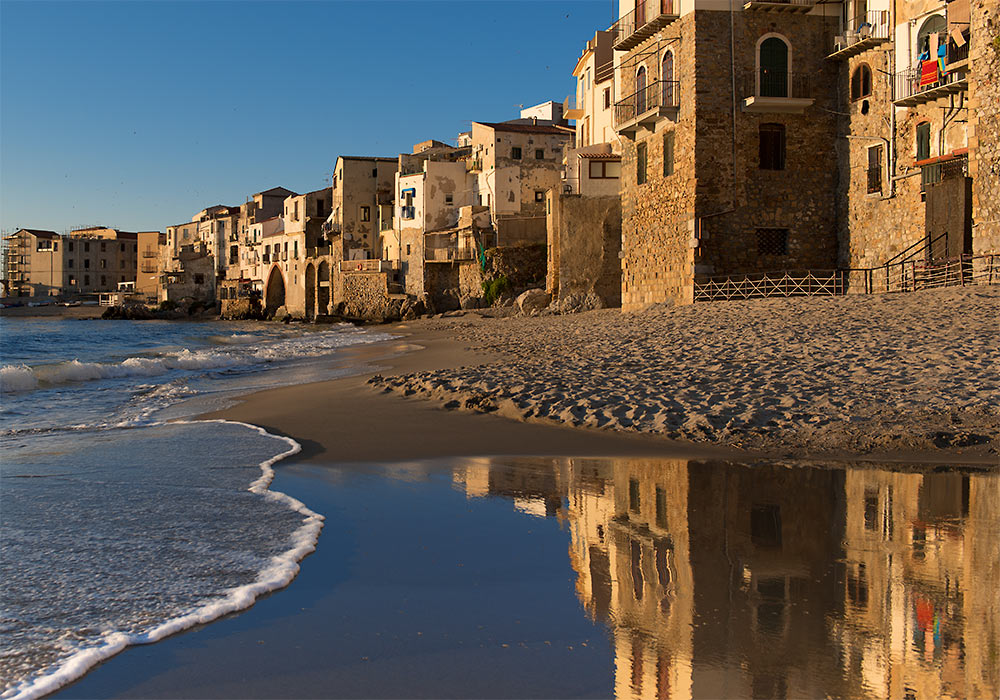
Cefalù beach: The old fishermen's houses.
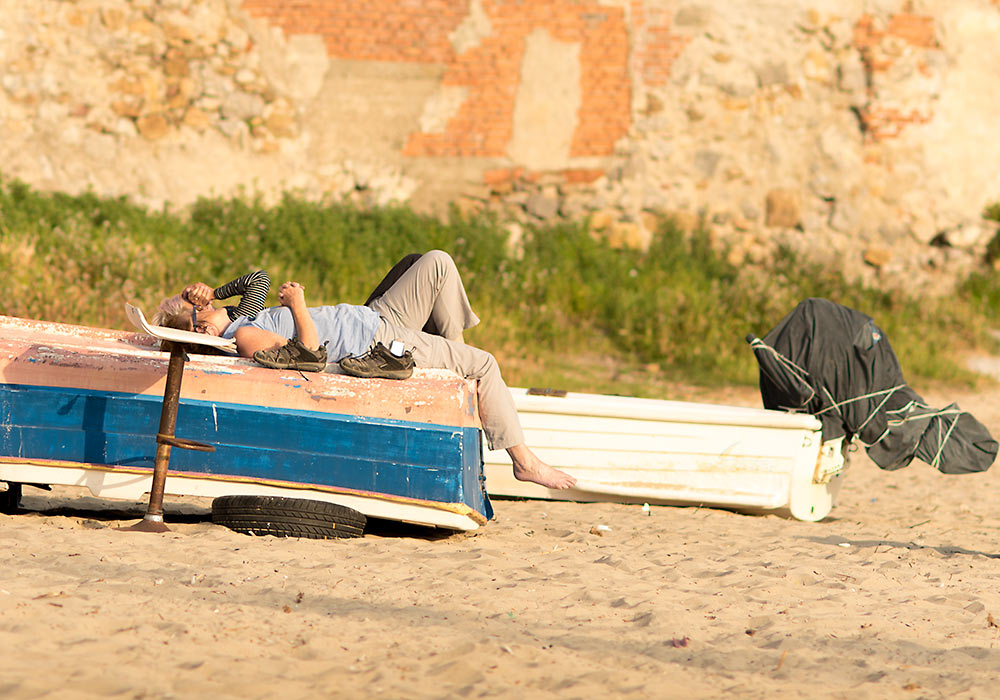
Easy living in Cefalù.
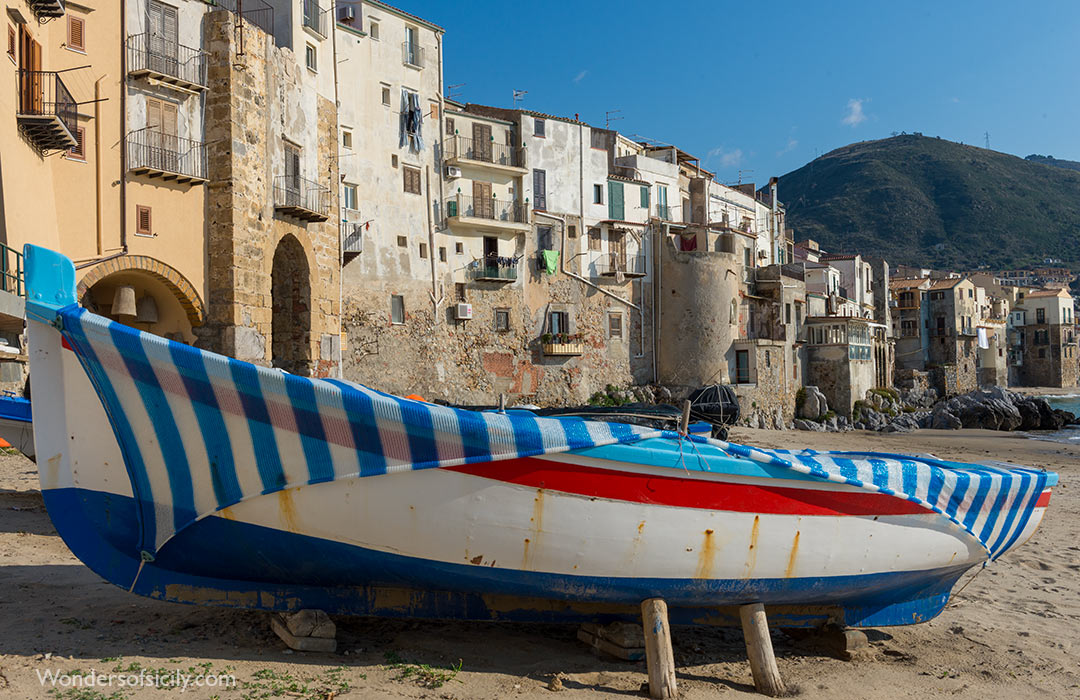
Roberto Giacchino’s Workshop
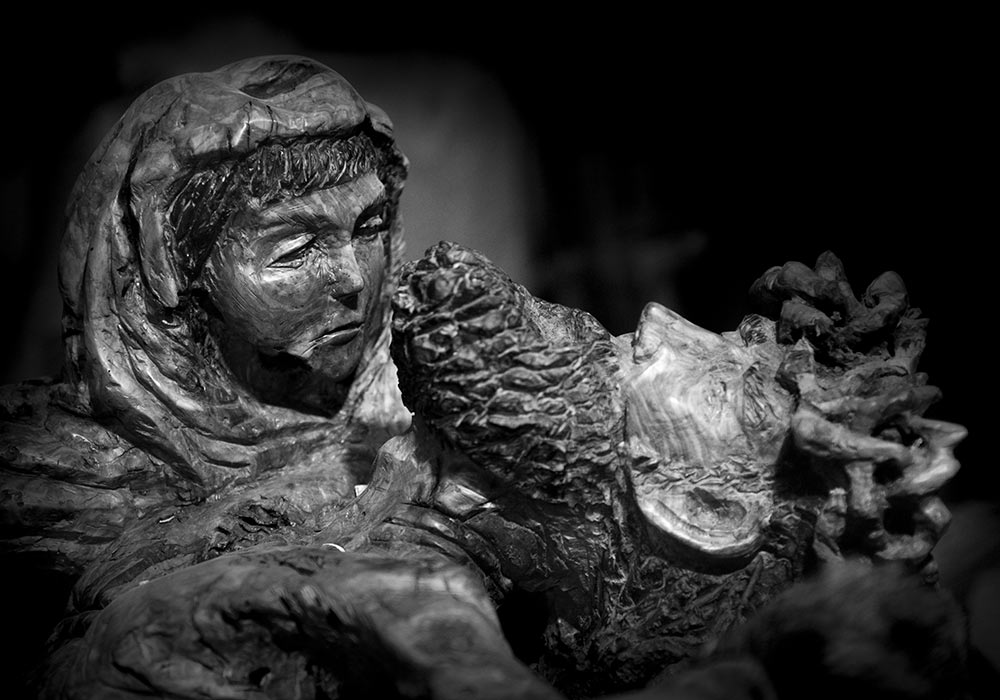
Detail of The Pietà - the repentance of the centurions, a sculpture by Roberto Giacchino, Cefalù. Olive wood carving. Roberto Giacchino’s workshop is in Via XXV Novembre, 55, not far from the Norman Cathedral.
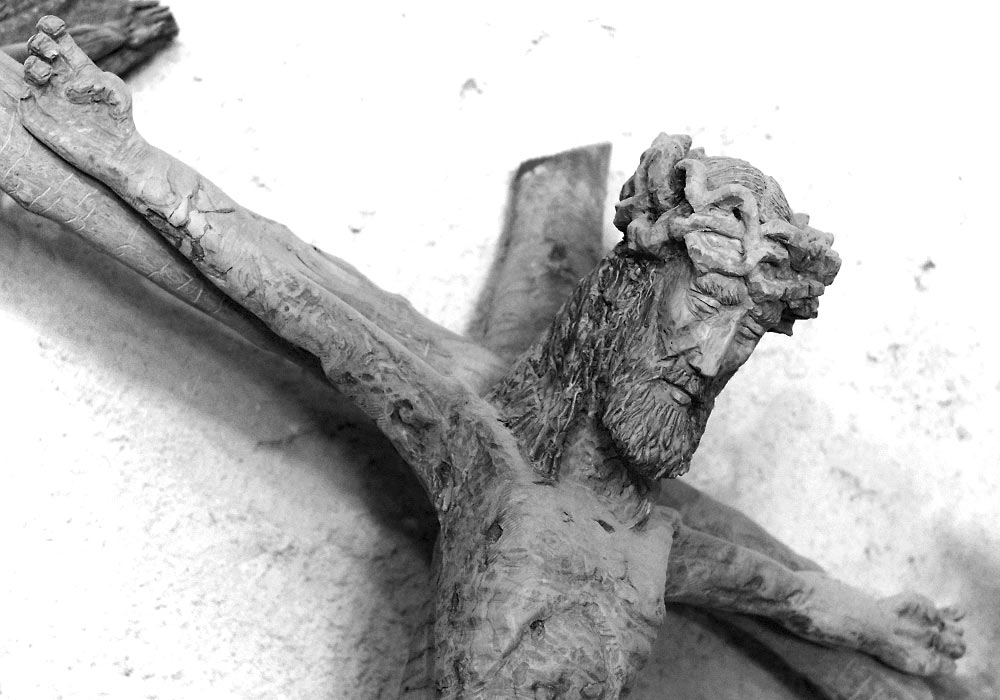
Crucifix by Roberto Giacchino, Cefalù. Olive wood carving.
Mandralisca Museum
Woman with a masculine face (Museo Mandralisca, Cefalù)
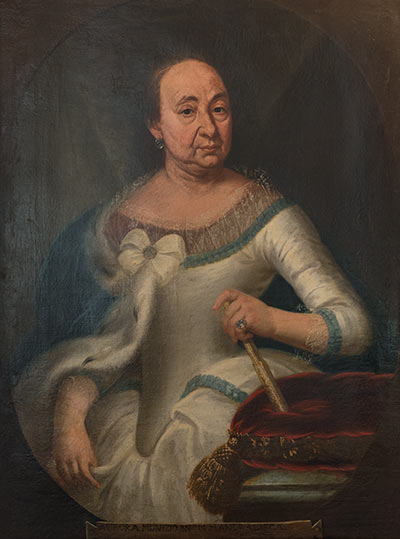
Woman with a masculine face. Painting in Museo Mandralisca, Cefalù.
Antonello da Messina: Portrait of an unknown man (1465)
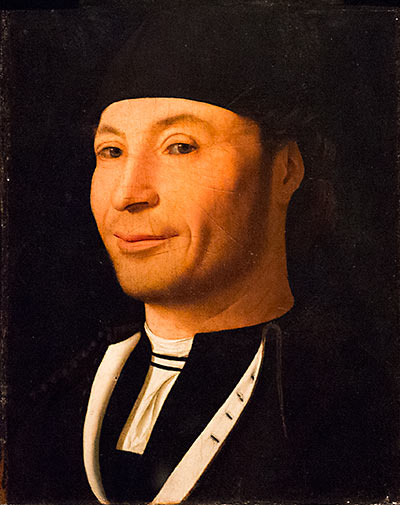
Museo Mandralisca: Ritratto di un Uomo Ignoto (Portrait of an unknown man) by Antonello da Messina, painted in 1465. This is the museum's jewel.
It is the items collected by baron Enrico Piraino di Mandralisca (1809-1864) that is exhibited in the museum.
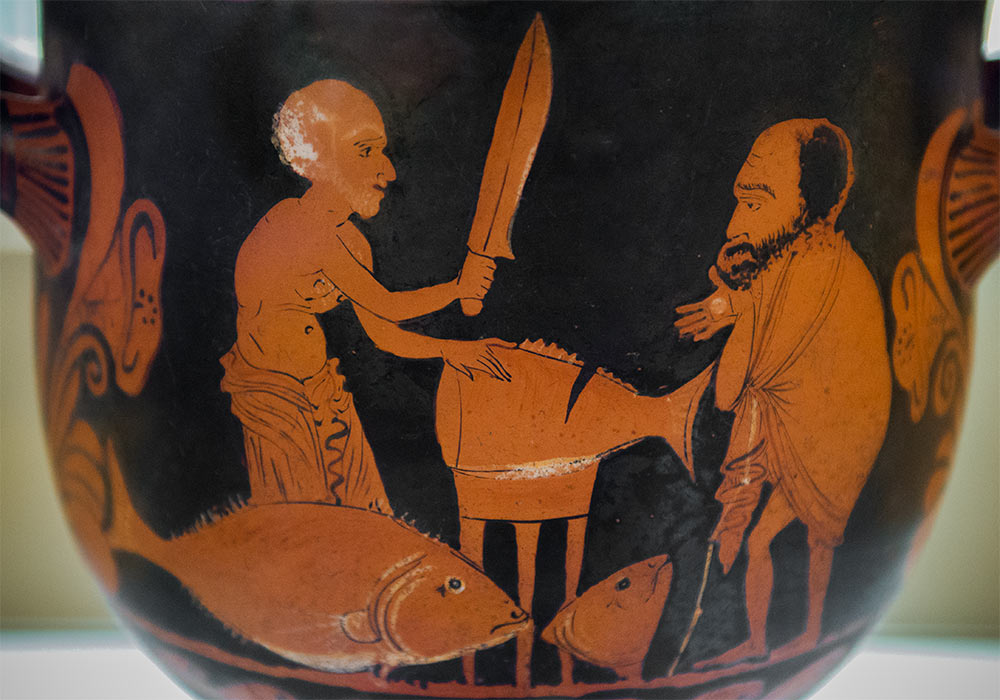
Tuna fish salesman (Mandralisca Museum, Cefalù).
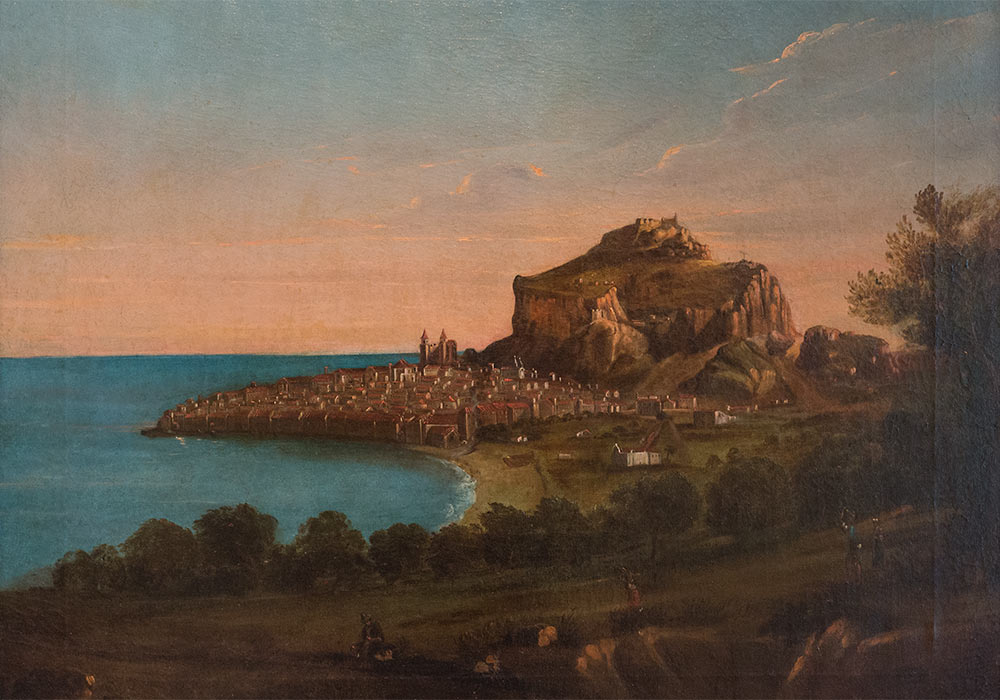
Cefalù certainly was a beautiful city even in the mid 1800's. Here a detail of a painting hanging in the Museo Mandralisca in Cefalù. It was painted by Francesco Tenuta Bevelacqua (1814-1858).
The distance between Cefalù and some other cities in Sicily
Cefalù-Palermo 69 km
Cefalù-Siracusa 249 km
Cefalù-Agrigento 134 km
Cefalù-Noto 275 km
Cefalù-Taormina 207 km
Cefalù-Catania 199 km
Cefalù-Trapani 169 km
Cefalù-Corleone 104 km
Church of the Purgatorio (Chiesa di Santo Stefano Protomartire)
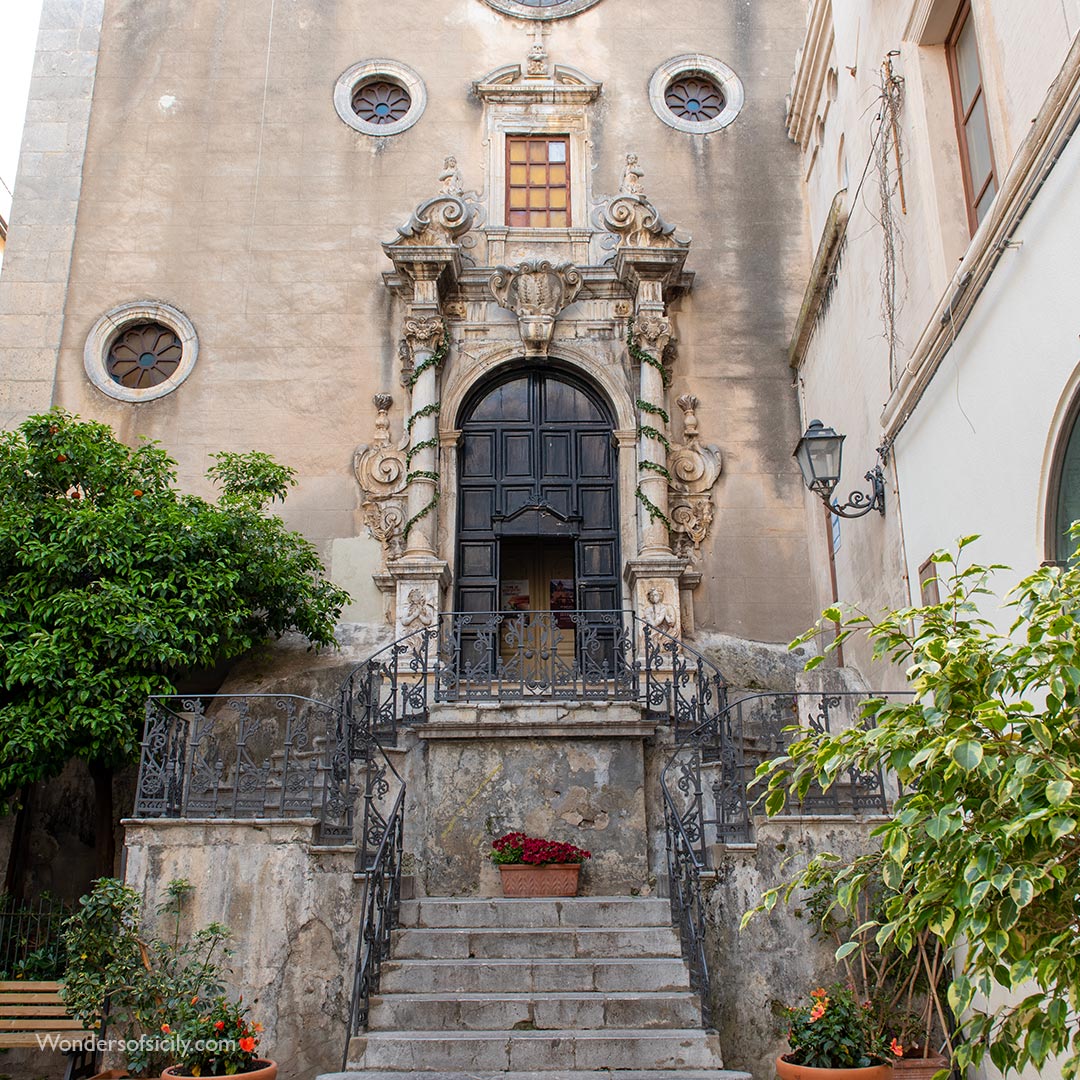
The Church of the Purgatorio (Chiesa di Santo Stefano Protomartire) between Corso Ruggero 104 and 106. The church was built in the 15th century, restored 17th century. Notice the skulls above the entrance, for details see the page Death in Sicily.
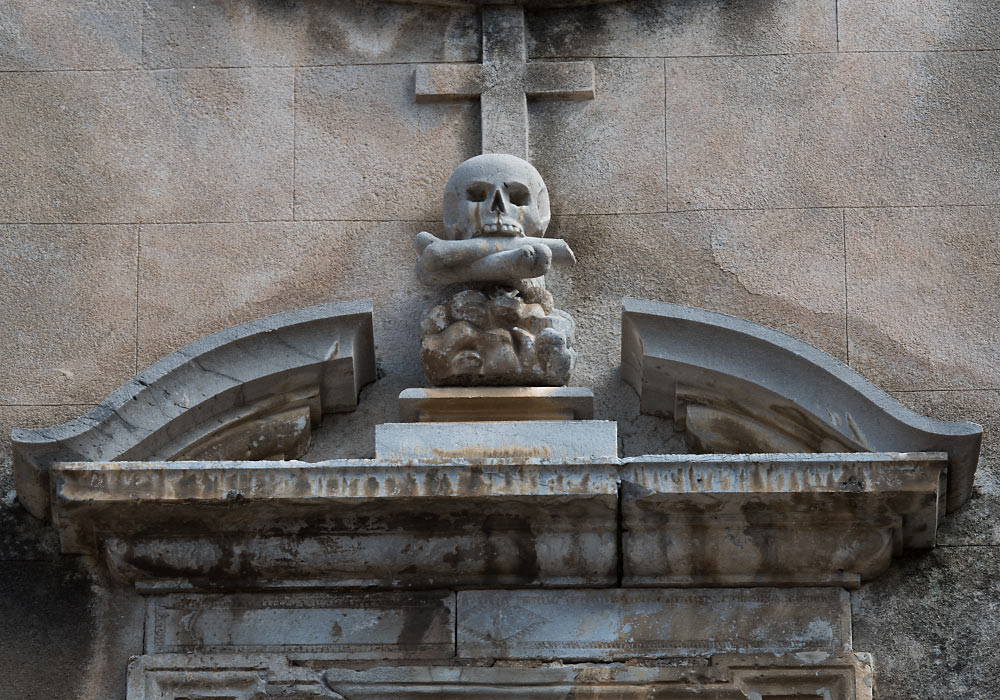
Detail of the exterior of the Church of the Purgatorio (Santo Stefano Protomartire) in Cefalù.
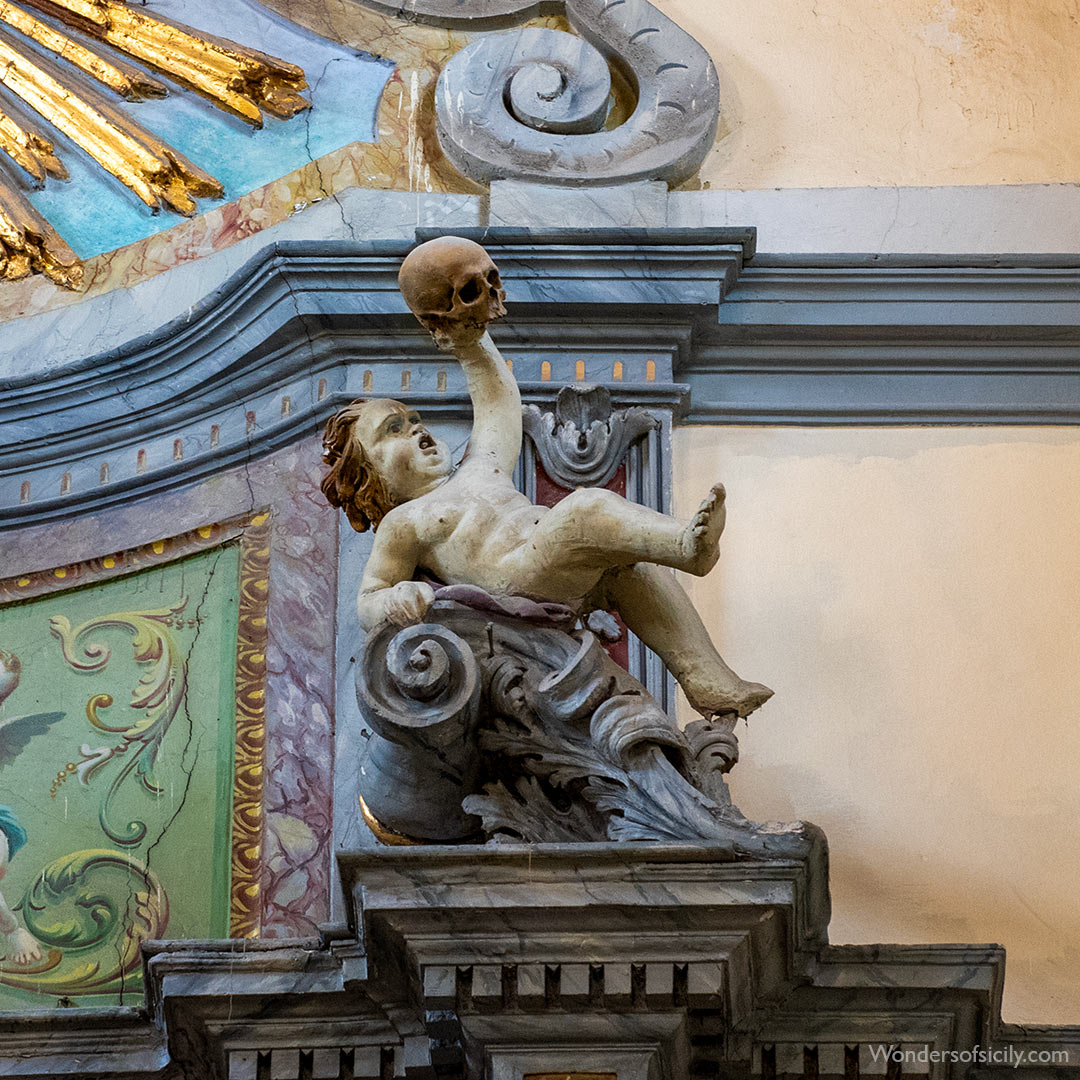
Putto holding a skull. Church of the Purgatorio (Santo Stefano).
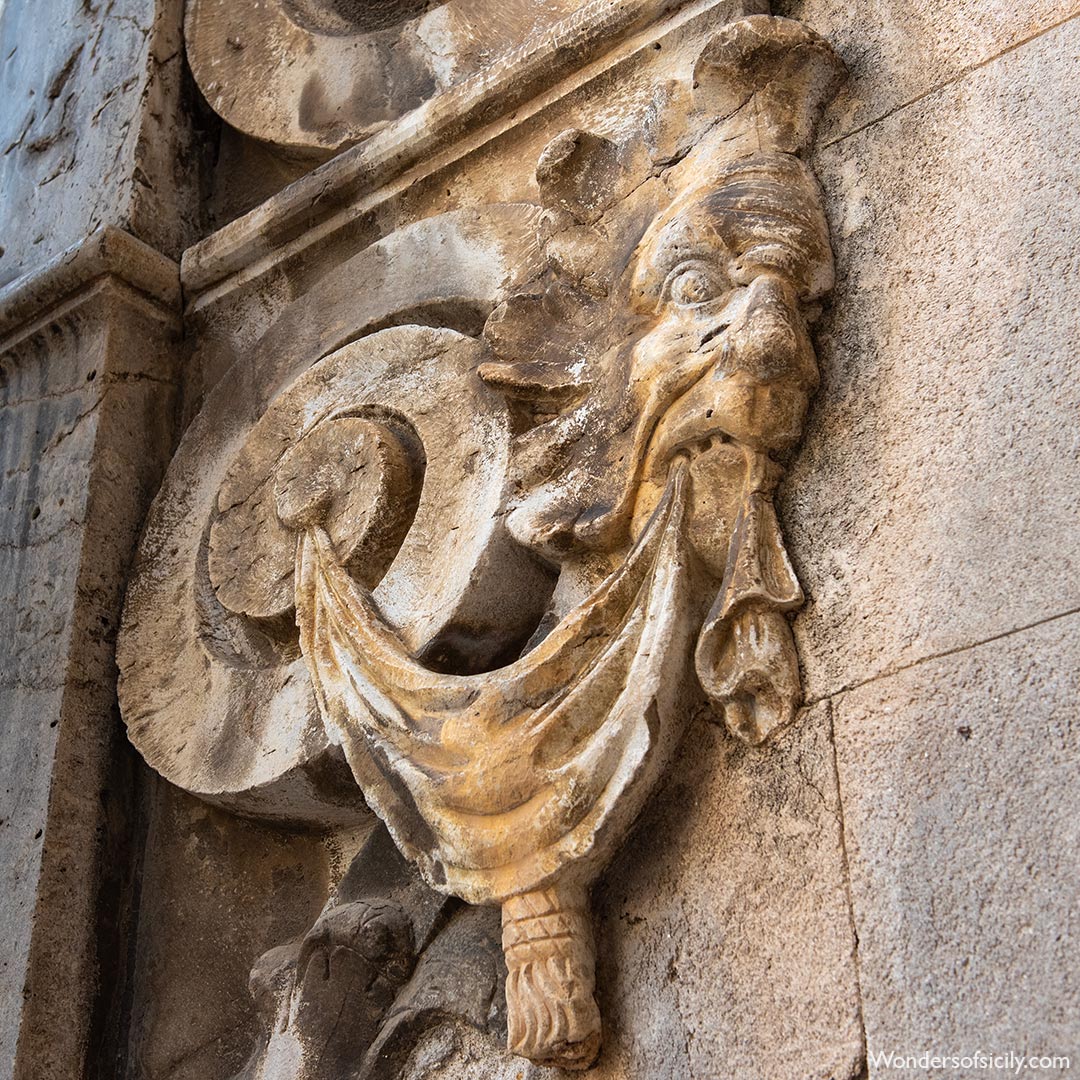
Relief by the main entrance of Chiesa di Santo Stefano.
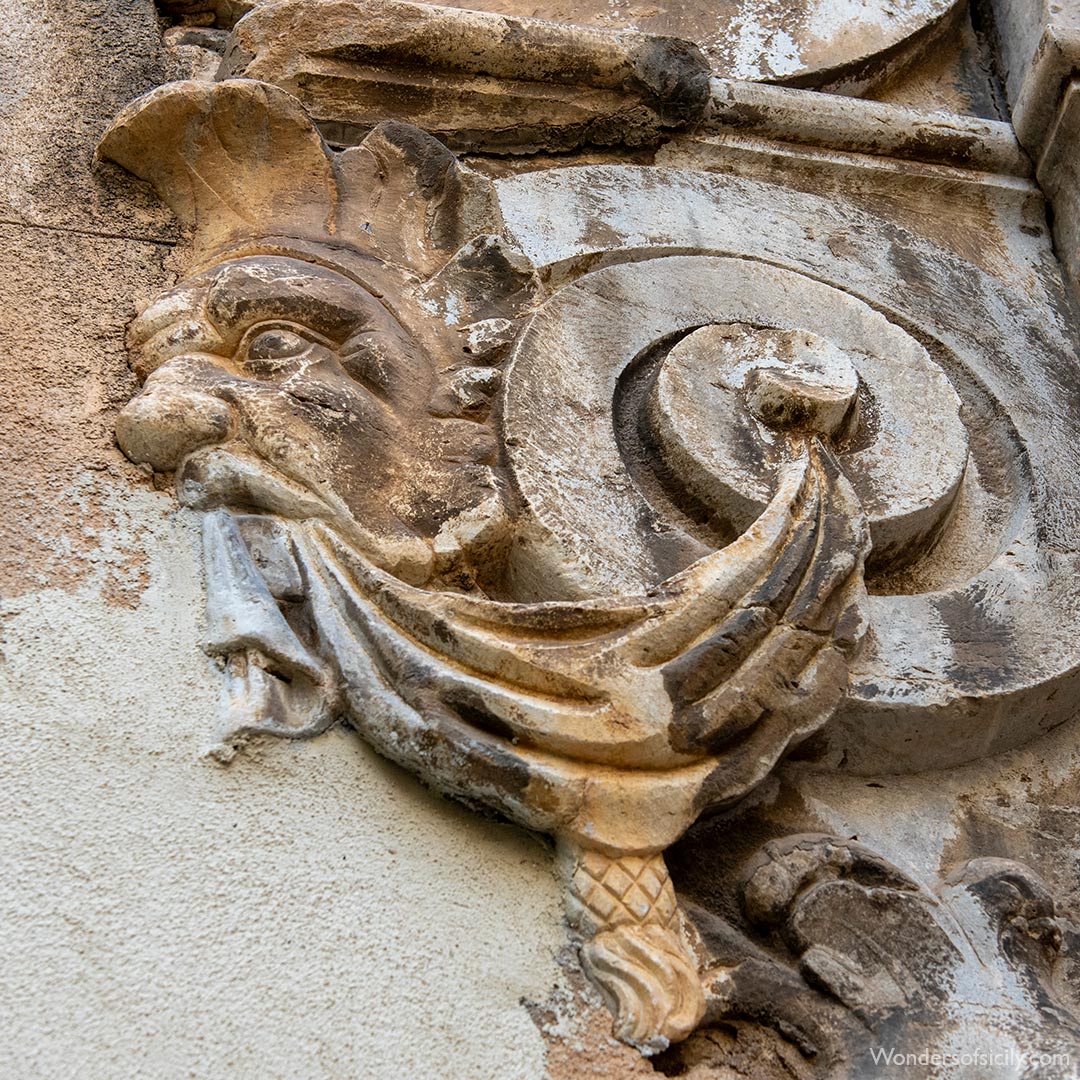
Relief by the main entrance of Chiesa di Santo Stefano, Cefalù.
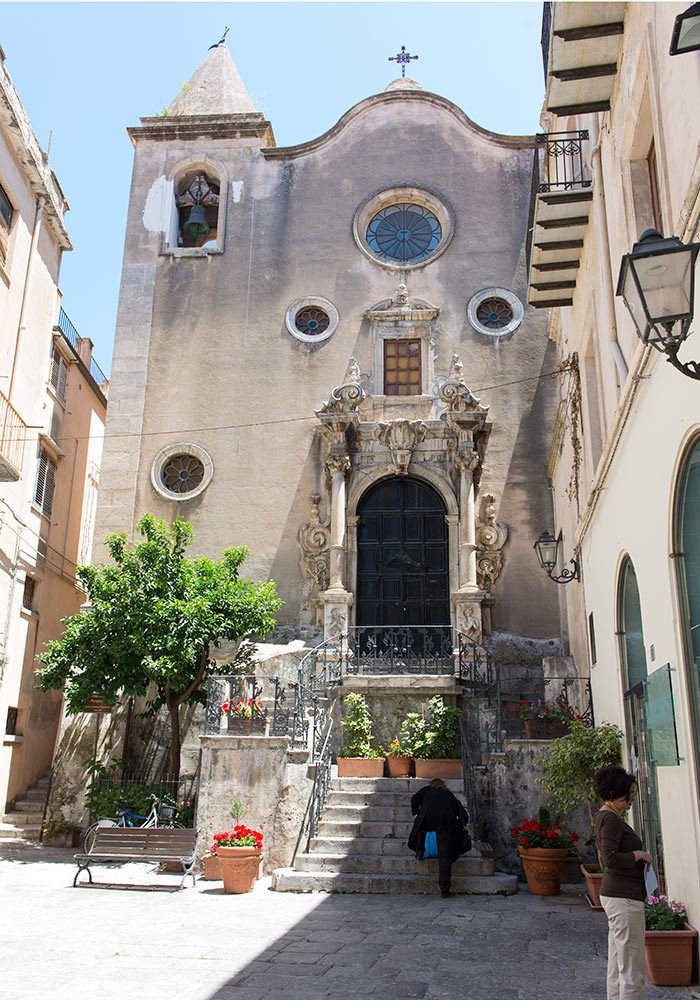
The Church of the Purgatorio (Chiesa di Santo Stefano Protomartire).
Chiesa di Santa Maria
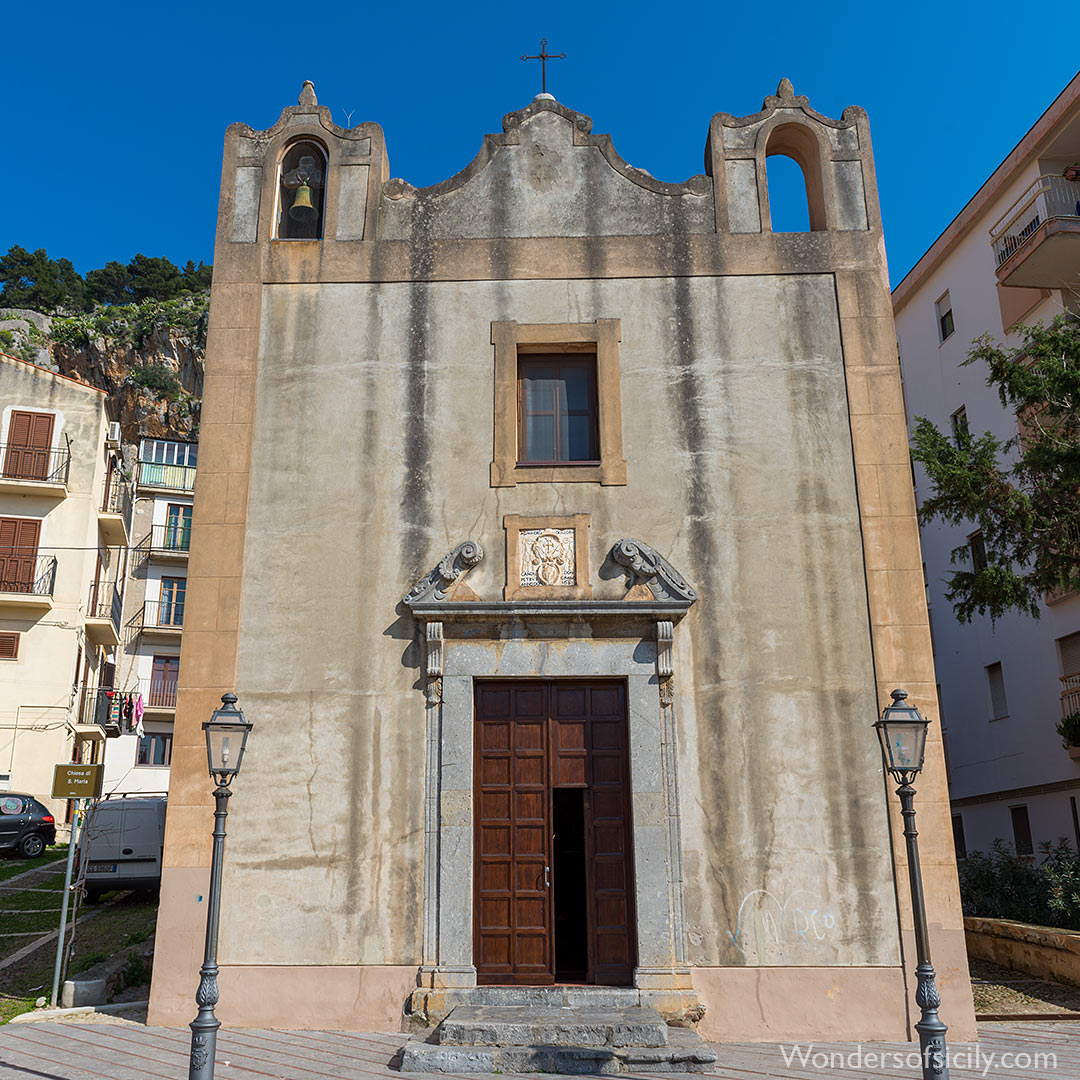
Chiesa di Santa Maria (15 Via Umberto I)
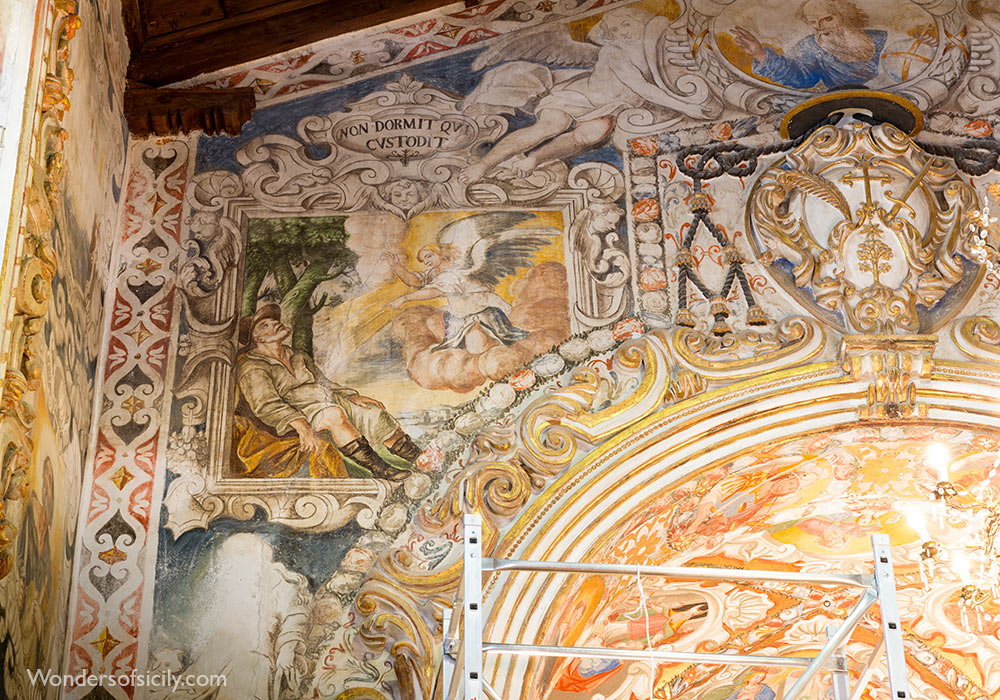
The Baroque murals of the Church of Santa Maria were being restored when I visited the church March 2015.
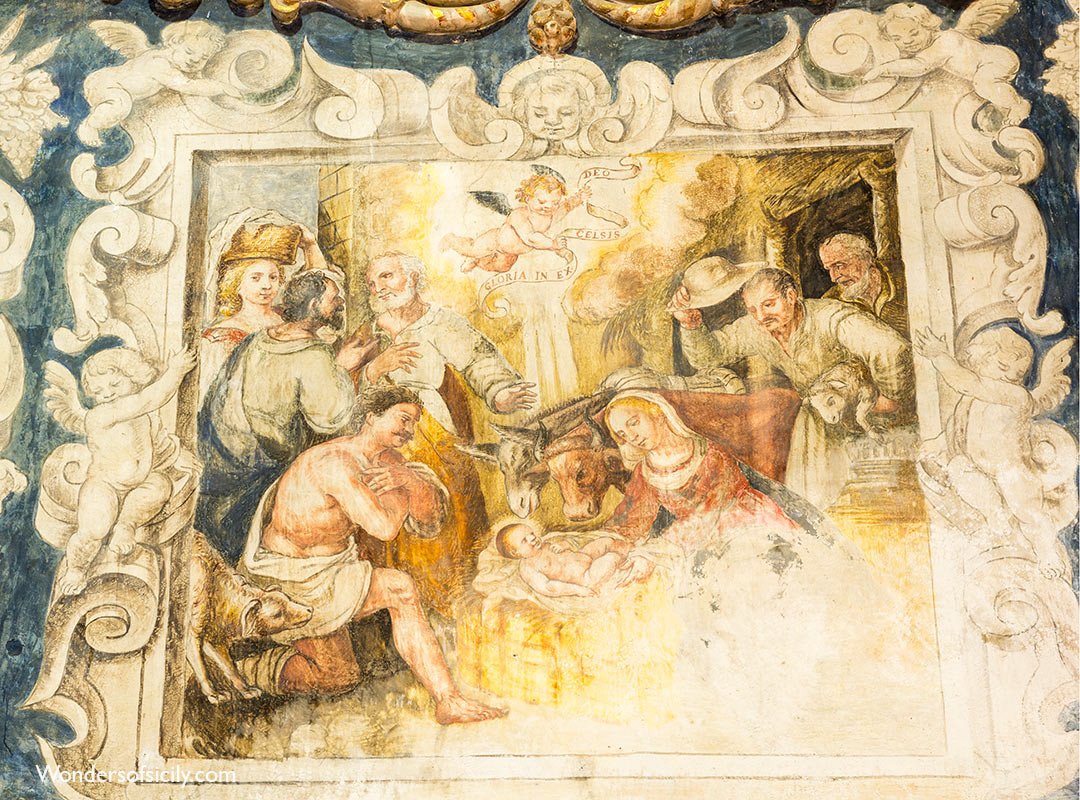
Baroque mural in the Chiesa di S. Maria, Cefalù.
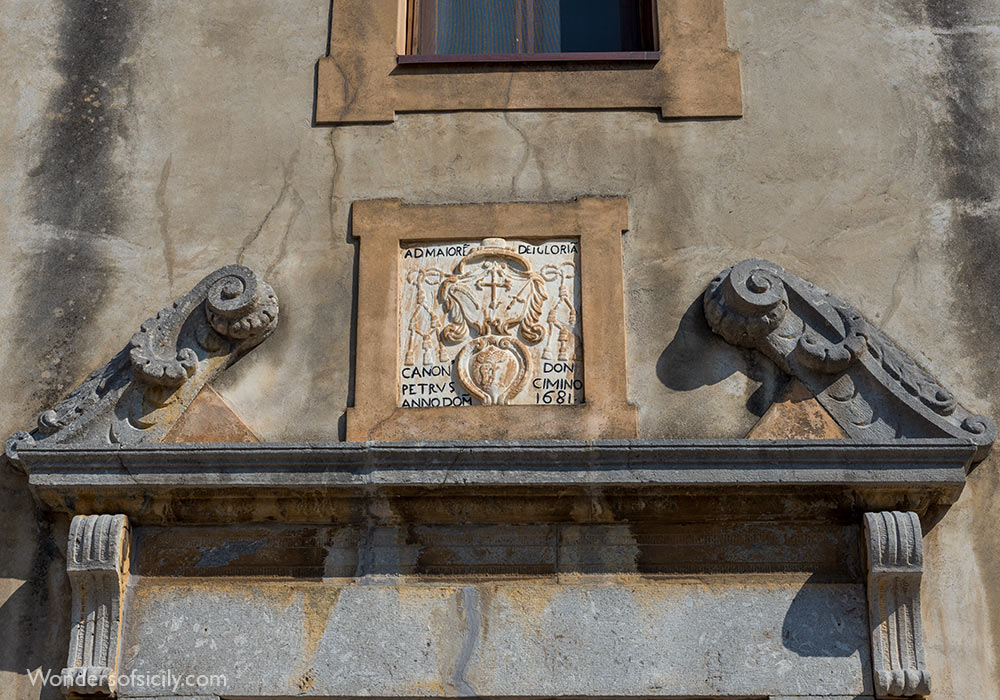
Entrance of Chiesa di Santa Maria. Anno 1681.
Chiesa di San Leonardo
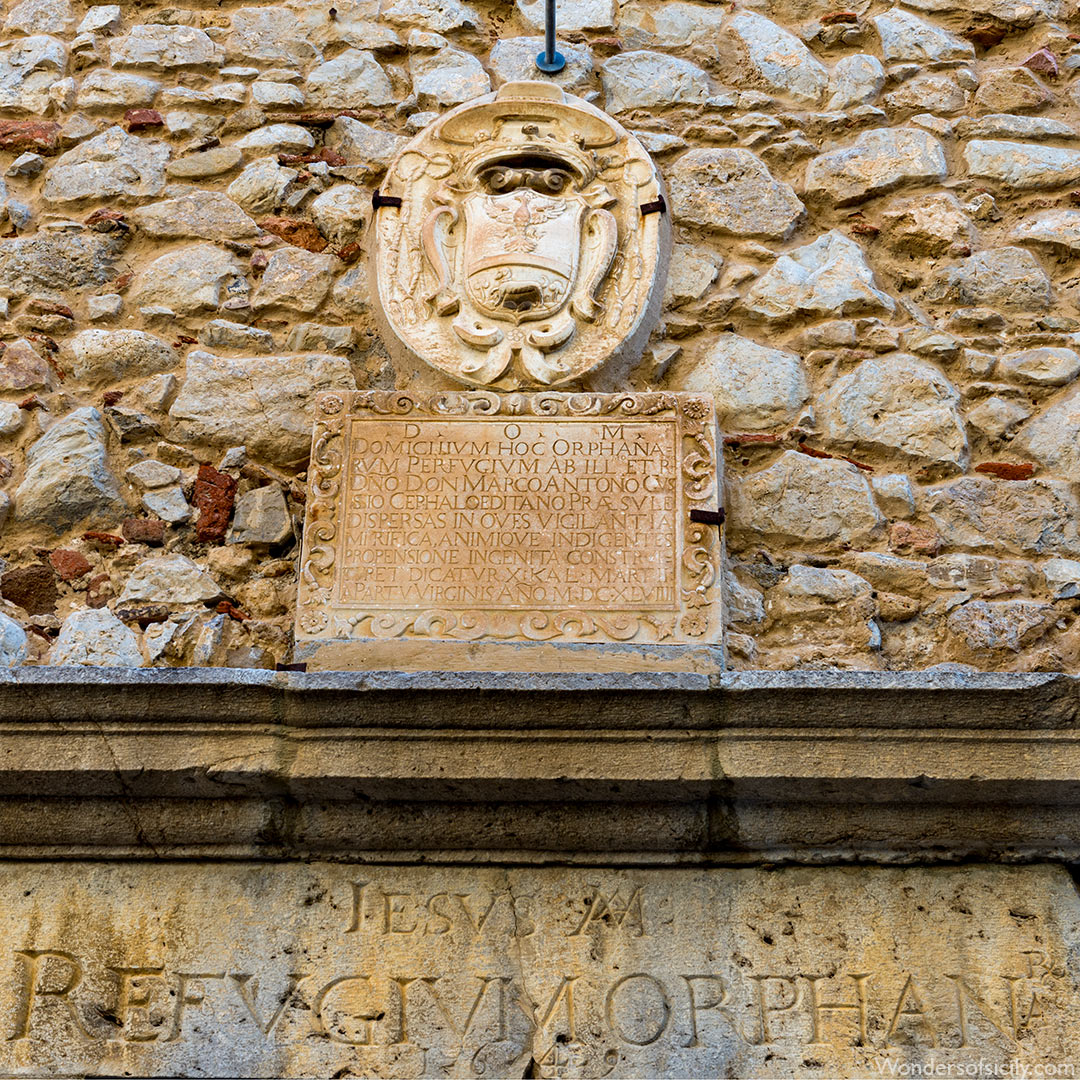
The church of San Leonardo was originally dedicated to San Giorgio. According to a Wikipedia article about the church (which has no references), it is mentioned in documents of 1159 and 1252 and is attributed to a foundation by Roger II prior to that of the cathedral. It was restored in 1558, a period in which it seems to have received its current title. In 1648 it was annexed to the "House of sheltered orphan girls" by bishop Marco Antonio Gussio, and in 1875 it was restored again by bishop Ruggero Blundo. There remain traces of the original central portal, currently closed off. (The information is not verified.)
More photos
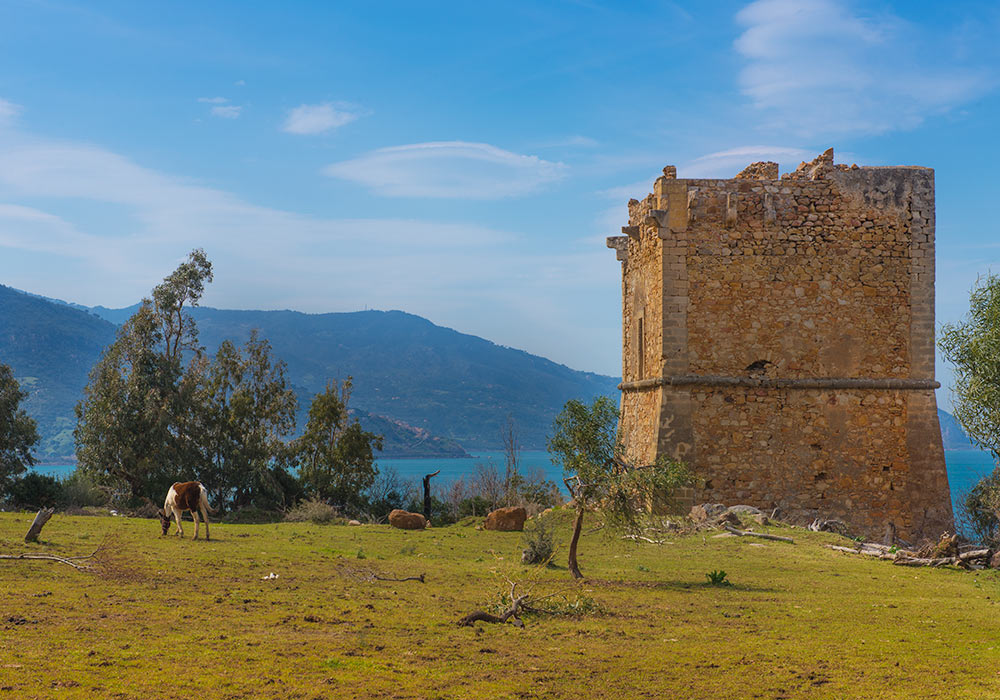
Watch tower, probably 16th century, on SS113 some kilometres from Cefalù (in the direction of Messina). The towers that surround the coasts of Sicily brings us back at a time of red alert in the entire Christian world, Jean Paul Barreaud explains in his TV series Sicilia svelata. Emperor Charles V built many defensive walls. In 1535 Charles V beat the Turks in a battle in the Bay of Tunis. Later, in 1571, his son Don Juan of Austria gathered soldiers of the Christian world in Messina ent to Greece to win the Battle of Lepanto against the Muslims.
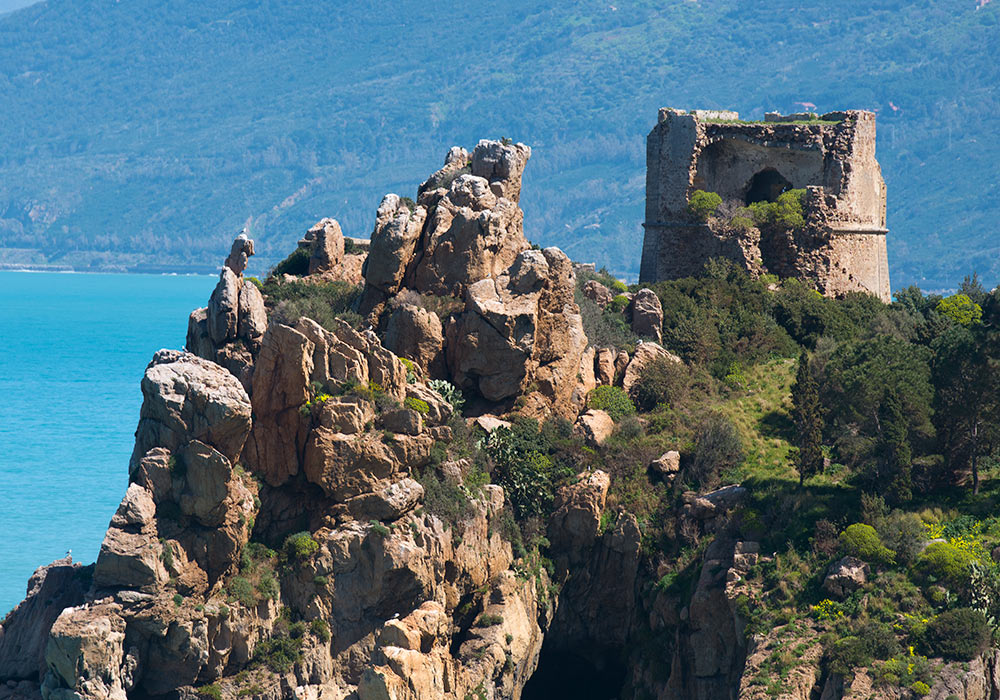
Another watch tower, just above the port in Cefalù.
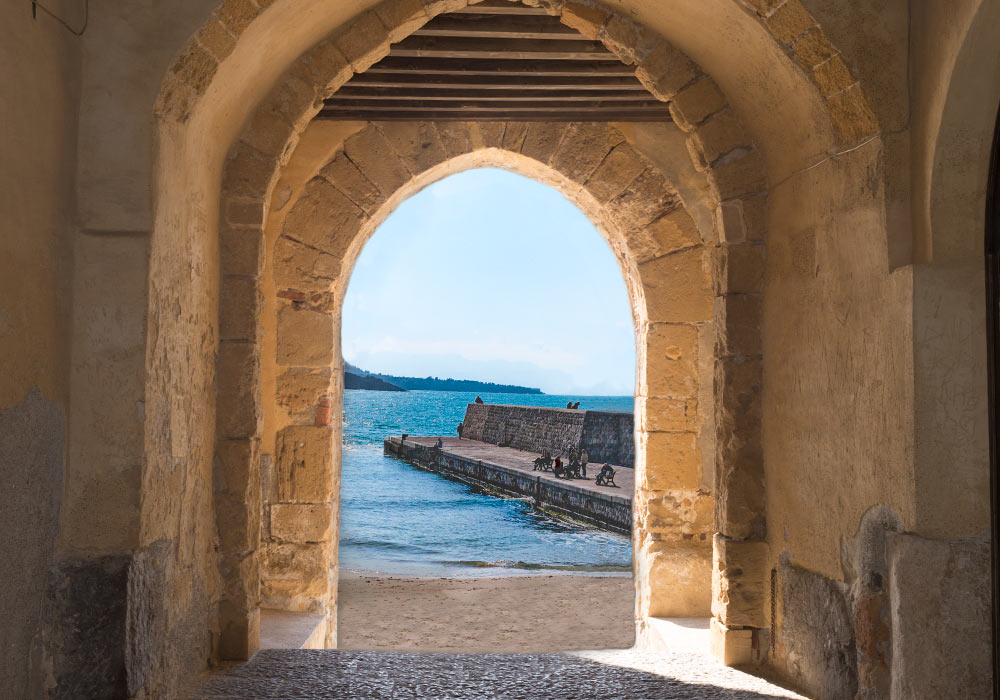
This is where Portia (Haley Lu Richardson) and Jack (Leo Woodall) were having a conversation in episode 6 of The White Lotus season 2 series during their stay in Cefalù.
The Cemetery
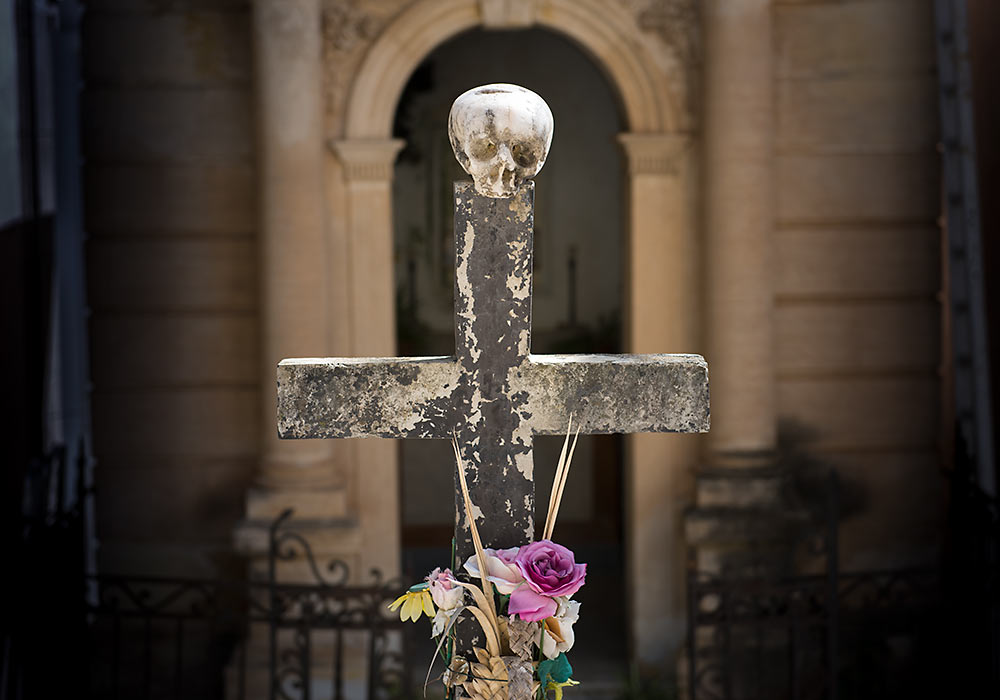
Death in Cefalù. A cross with a skull on top on a grave in the local cemetery.
CLICK HERE to see more photos from Cefalù!
For information about guided tours in Sicily, please contact Jean Paul Barreaud by email: siciliasvelata@gmail.com
Photographs of sunsets in Sicily
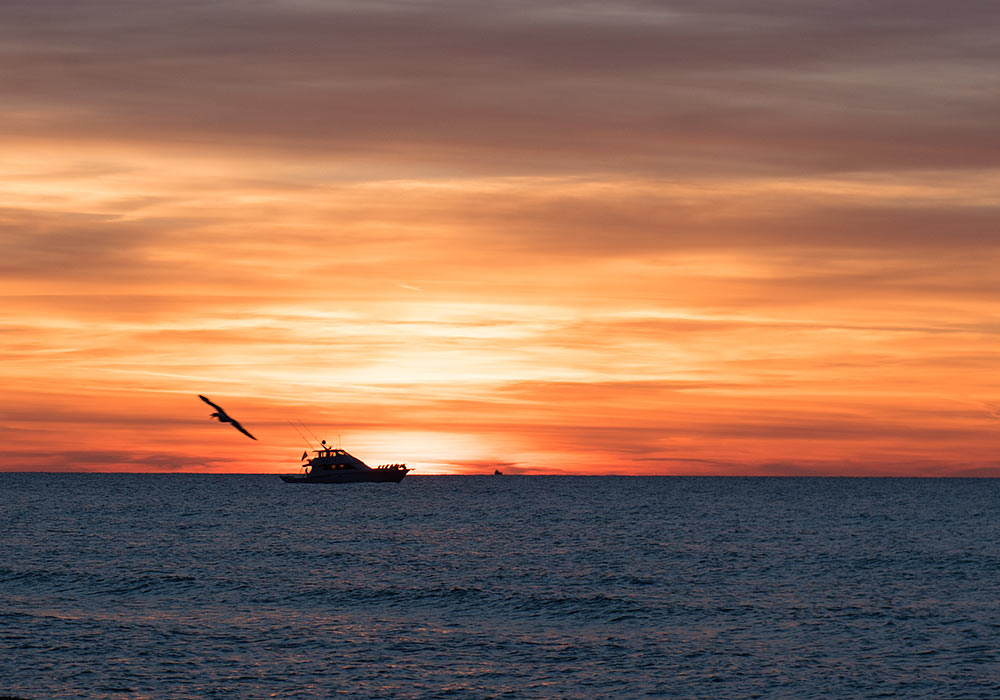
The sunsets in Cefalù are usually really spectacular. This phote was taken in May.
Here are some tips for taking stunning photographs of sunsets in Sicily:
- Be patient, and plan your photo sessions.
- Find a good location with an nice view of the horizon, such as a port, beach, rooftop, cliff, or hilltop.
- Details to create contrasts will add to the quality of the photo. This can be elements in the foreground to create depth, or buildings, ships, trees, mountains etc. Don't be afraid of failing! Experiment with different compositions: Try framing the sunset in different ways, such as including foreground elements like trees or buildings, or shooting from different angles.
- Scattered clouds can make for beautiful sunset photos.
- Consider using a tripod: A tripod is a good investment if you want to take your photography to the next level. It will help you keep your camera steady and so you can capture sharper photos.
- Use a polarizing filter (also known as a “polarizer”): A polarizing filter can help reduce reflections in the water etc.
- Always shoot in Raw image format: Shooting in RAW will give you more flexibility to adjust your photos in post-processing, allowing you to bring out the colors and details of the sunset.
- Many cameras have pre-defined programs for shooting sunsets. Try it!
- Using manual settings: Experiment! Adjust aperture, shutter speed, and ISO to see how it affects the look of your photos. You wil probably need to take many (a lot!) photos to get the perfect sunset photo.
- Edit your photos in Adobe Photoshop, Lightroom, GIMP og your other favourite photo editing software to adjust the colors and contrast of your sunset photos to make them really stunning.
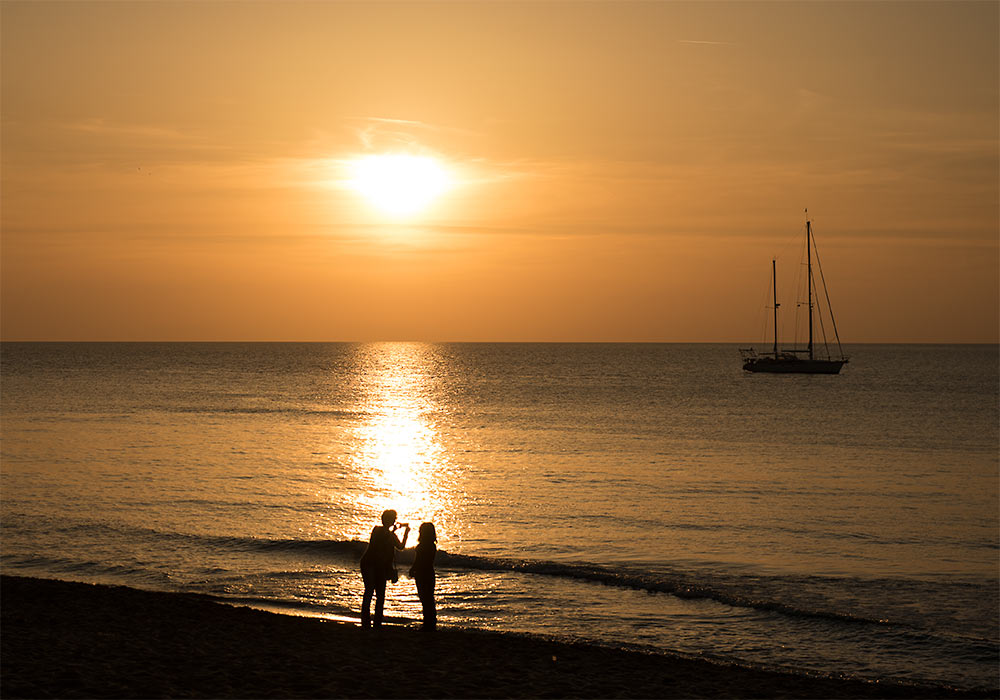
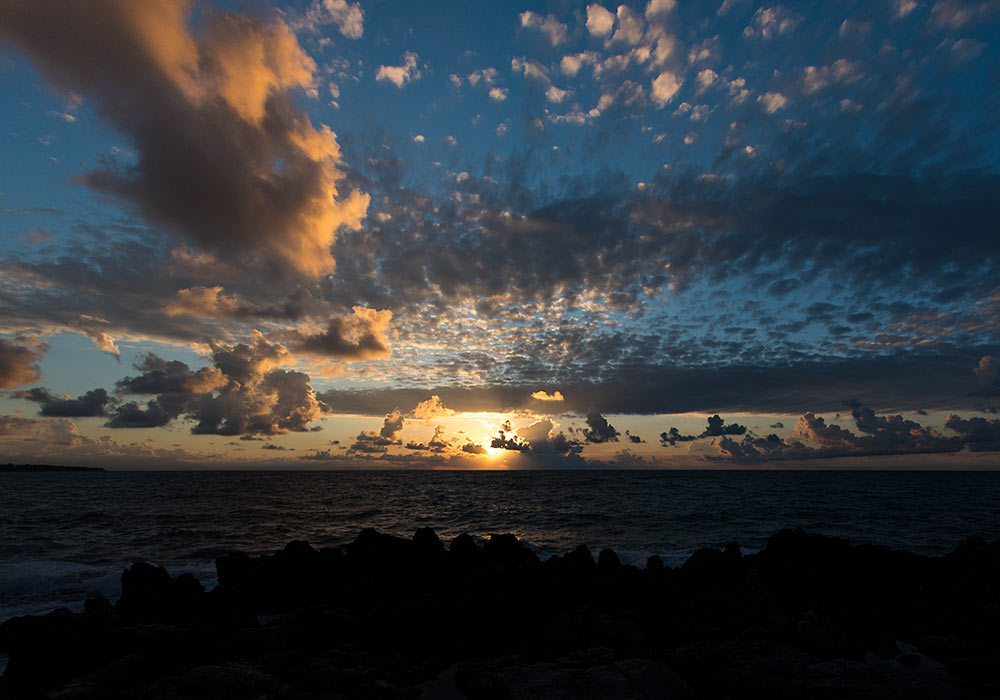
CLICK HERE to see more photos from Cefalù!
Hotels / accommodation in Cefalù
- Palazzo Maria (apartements with the cathedral as the closest neighbour)

